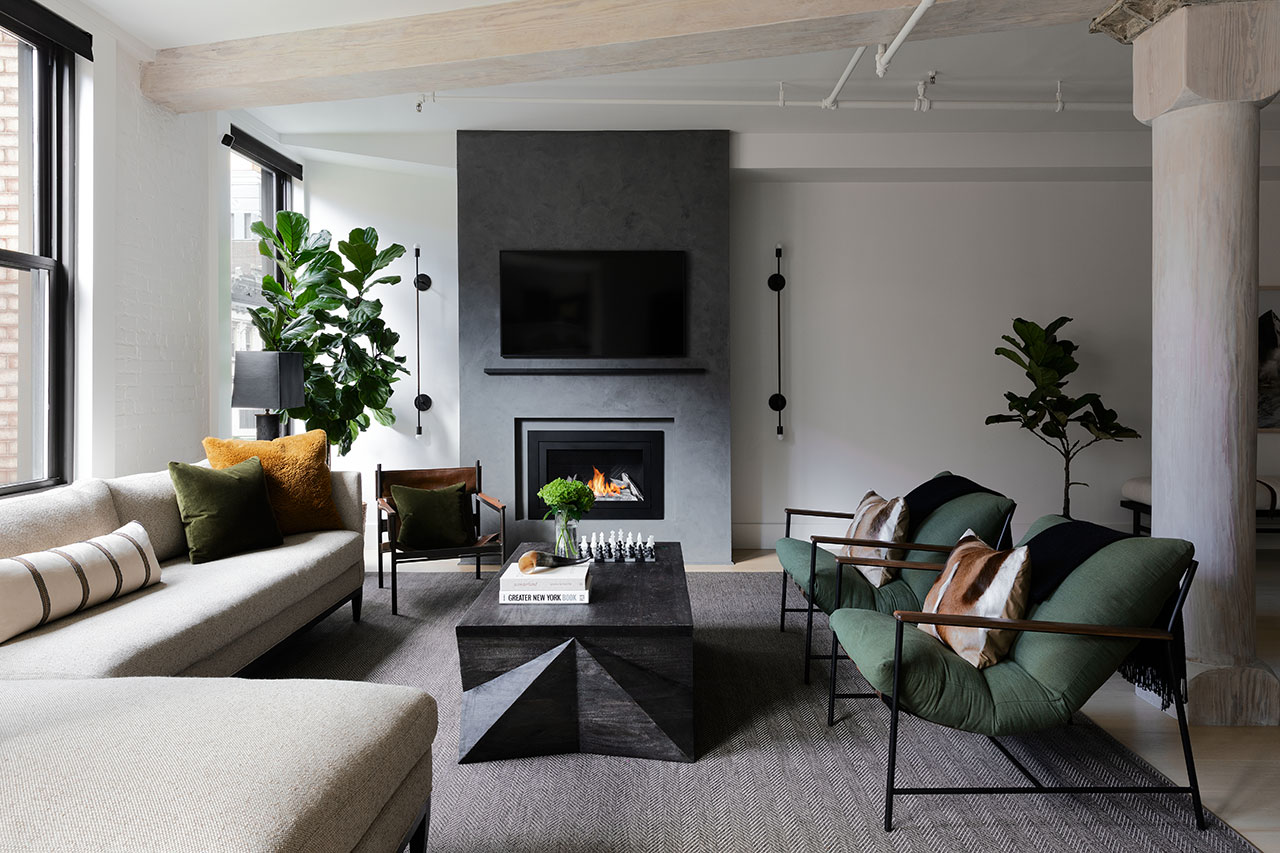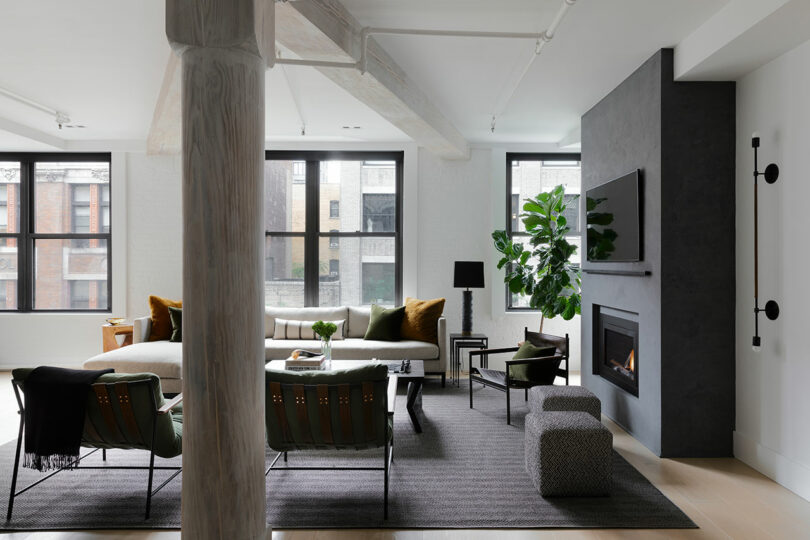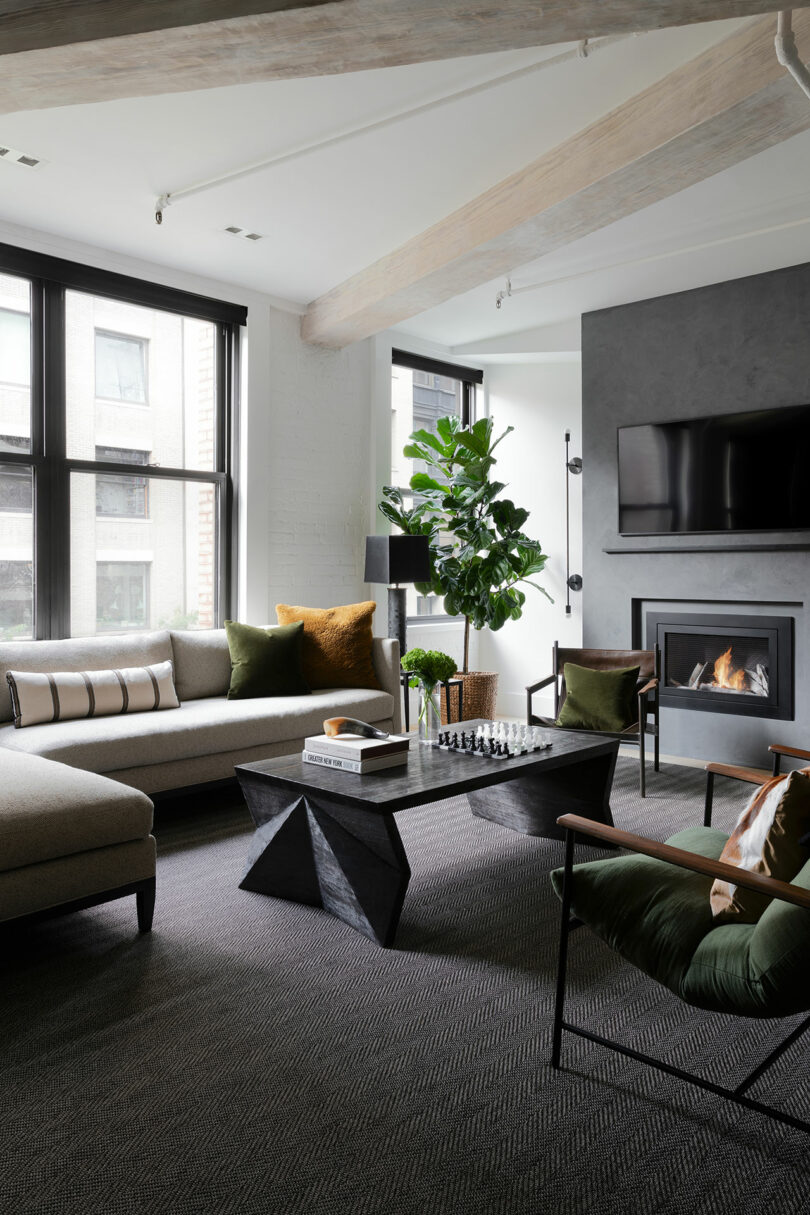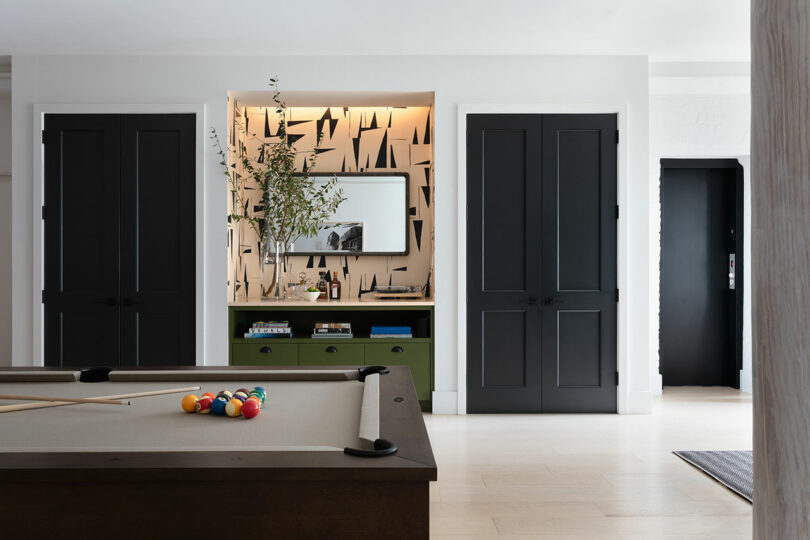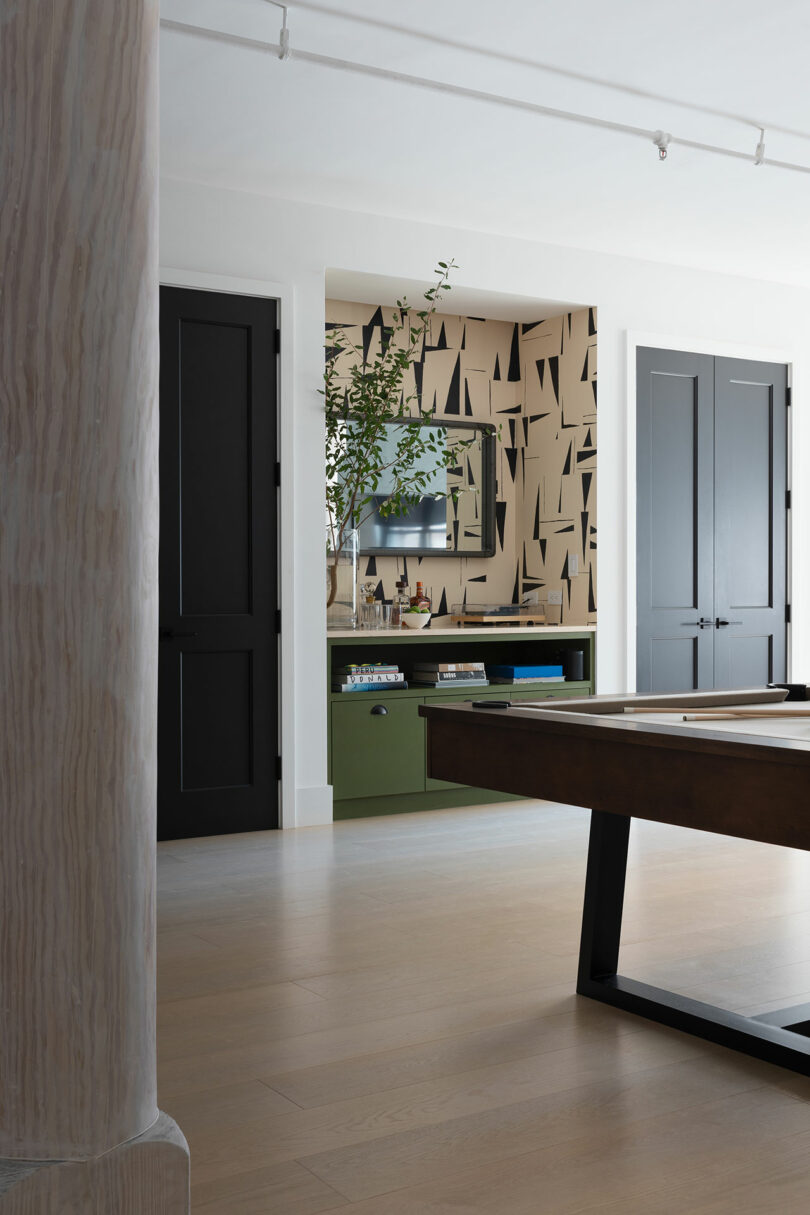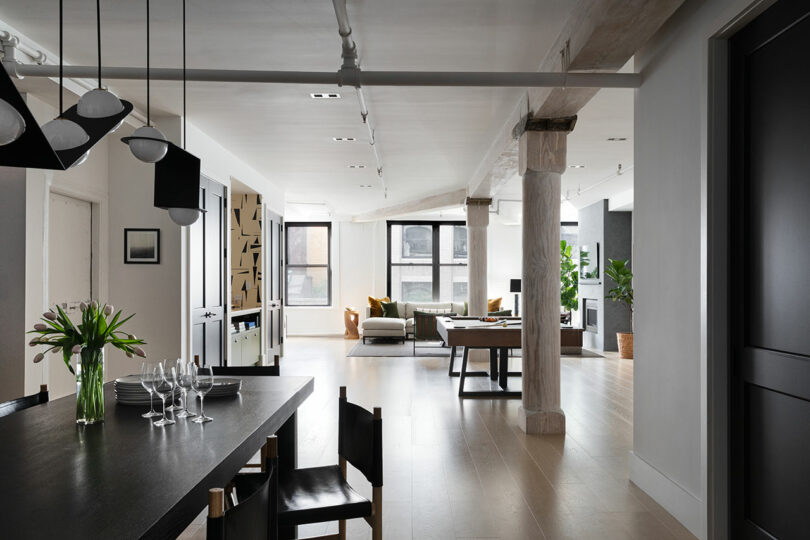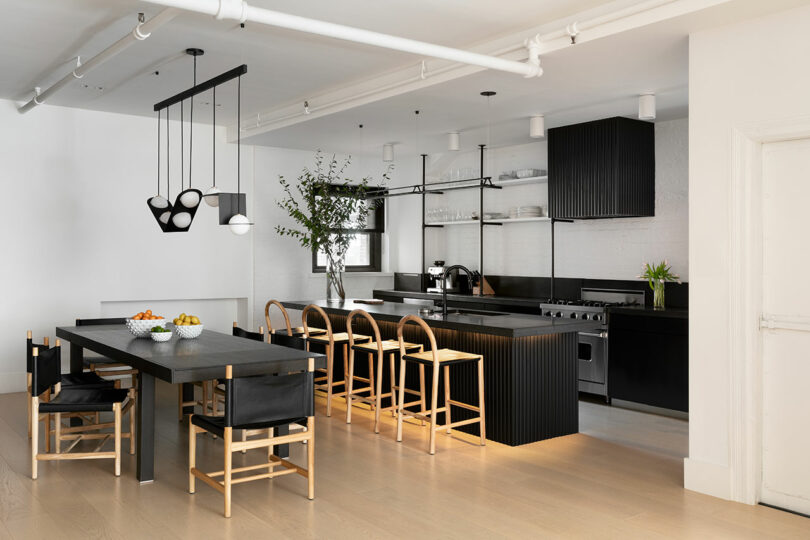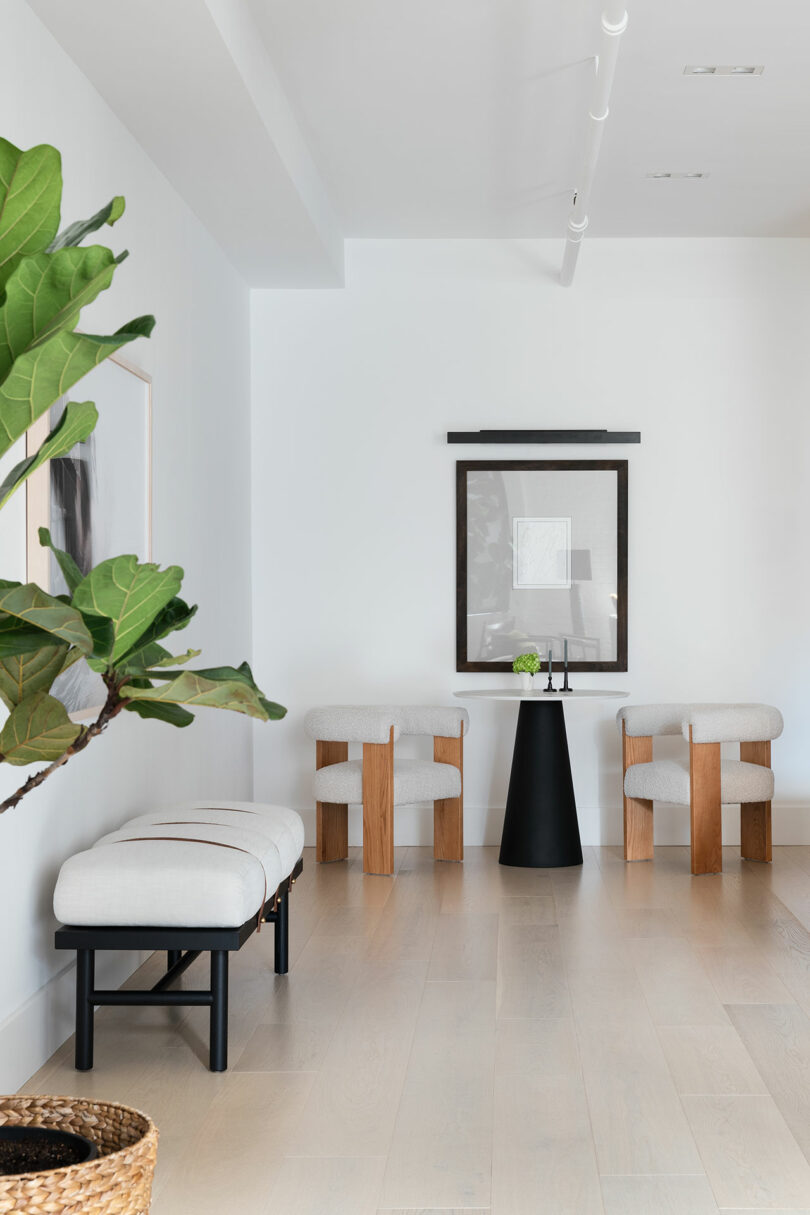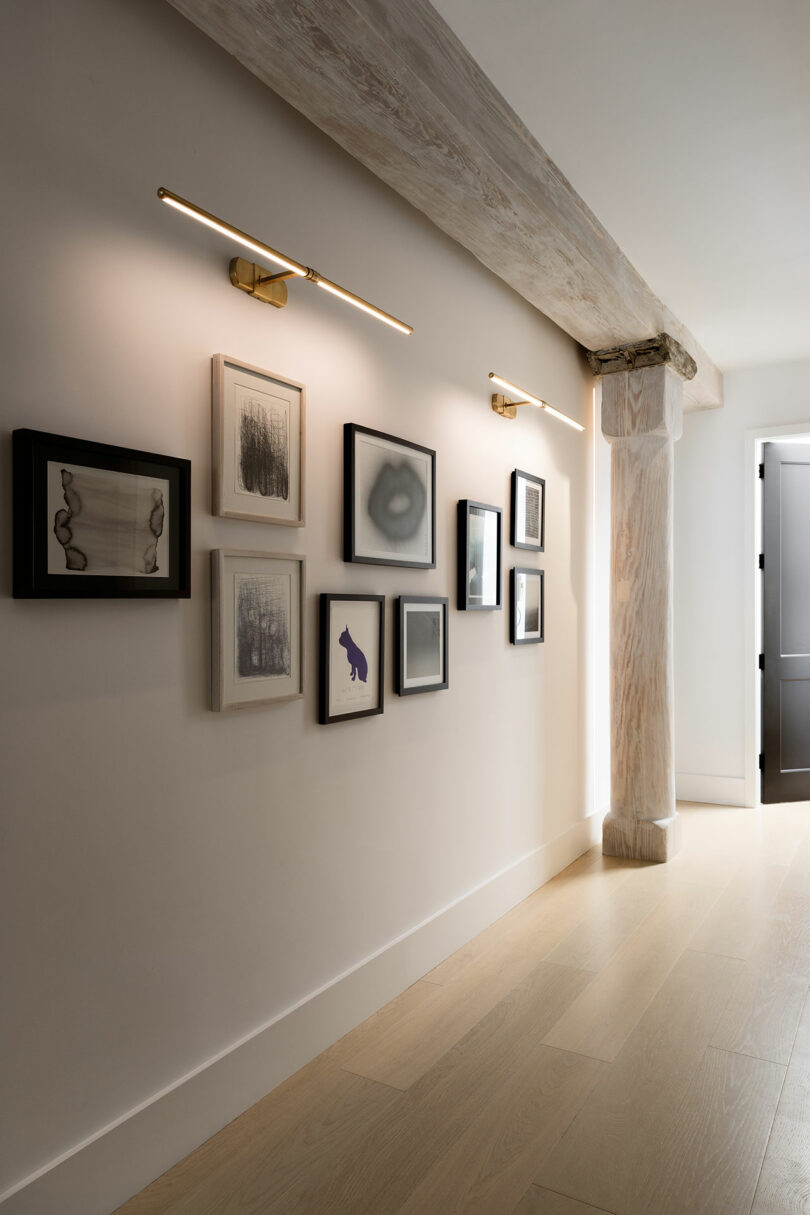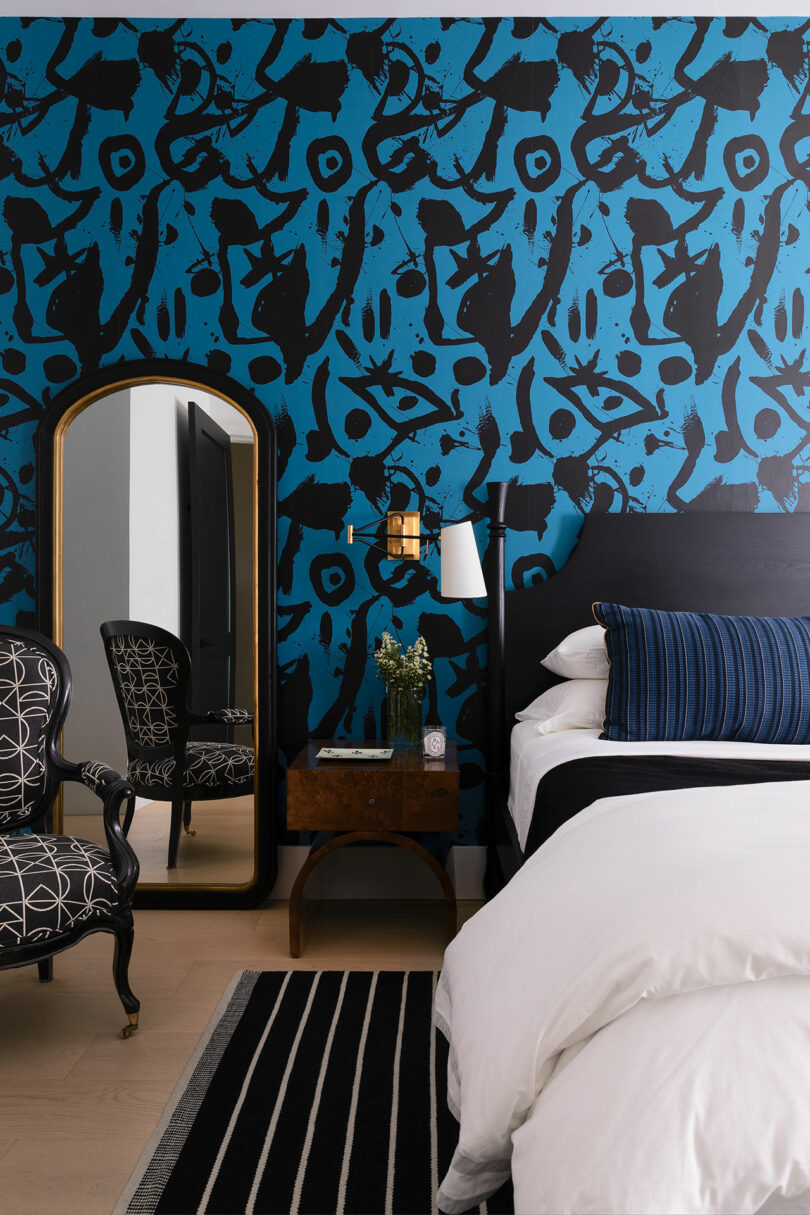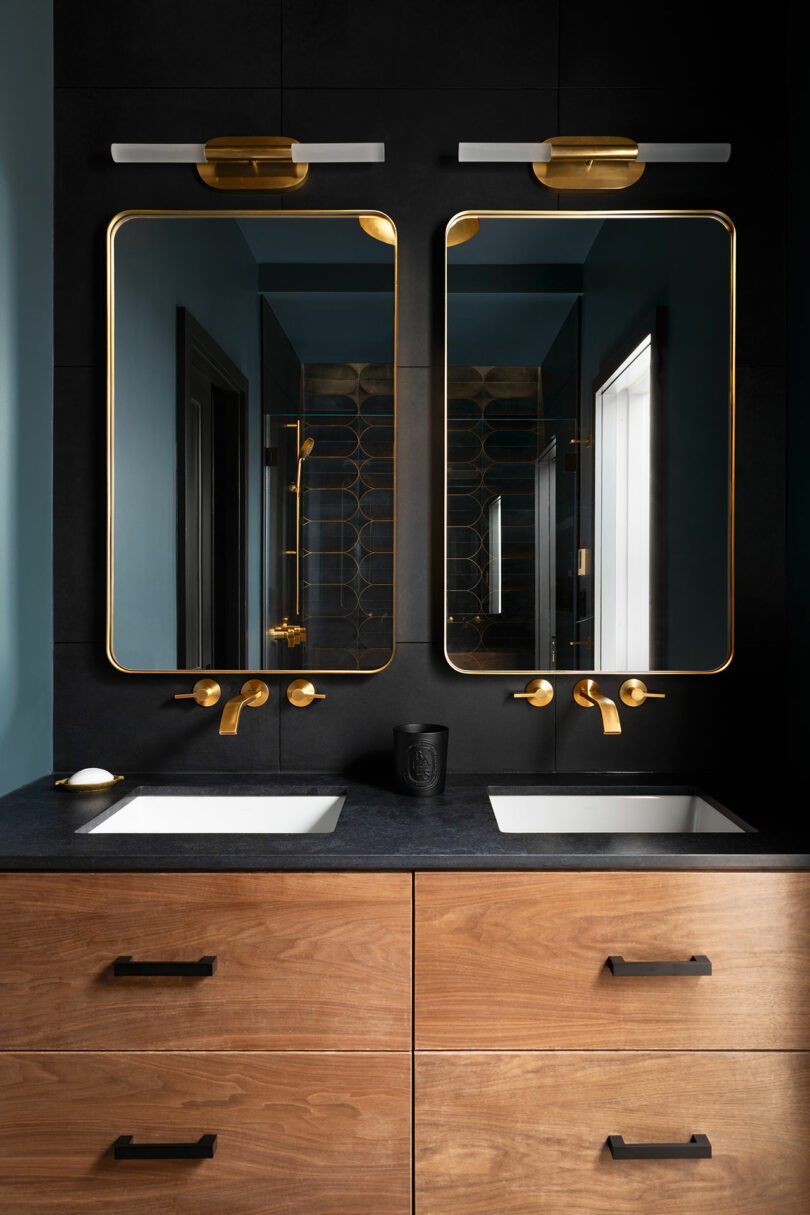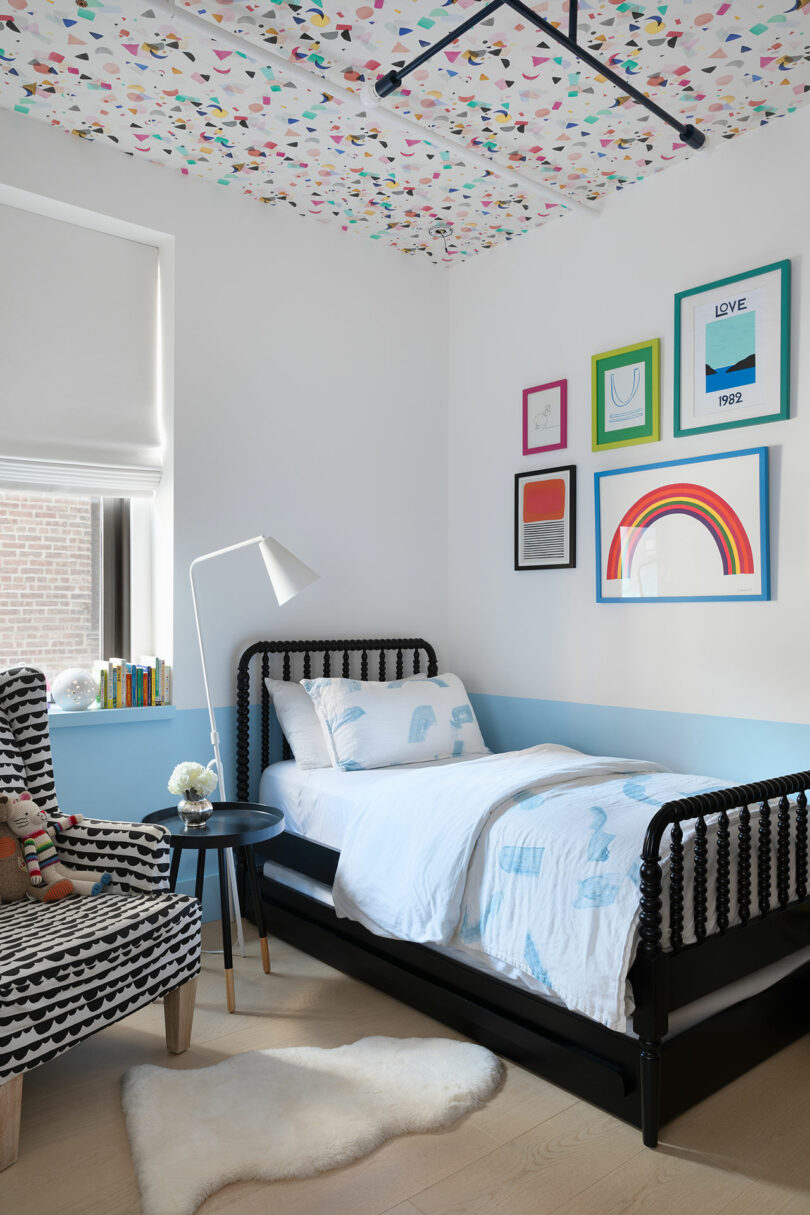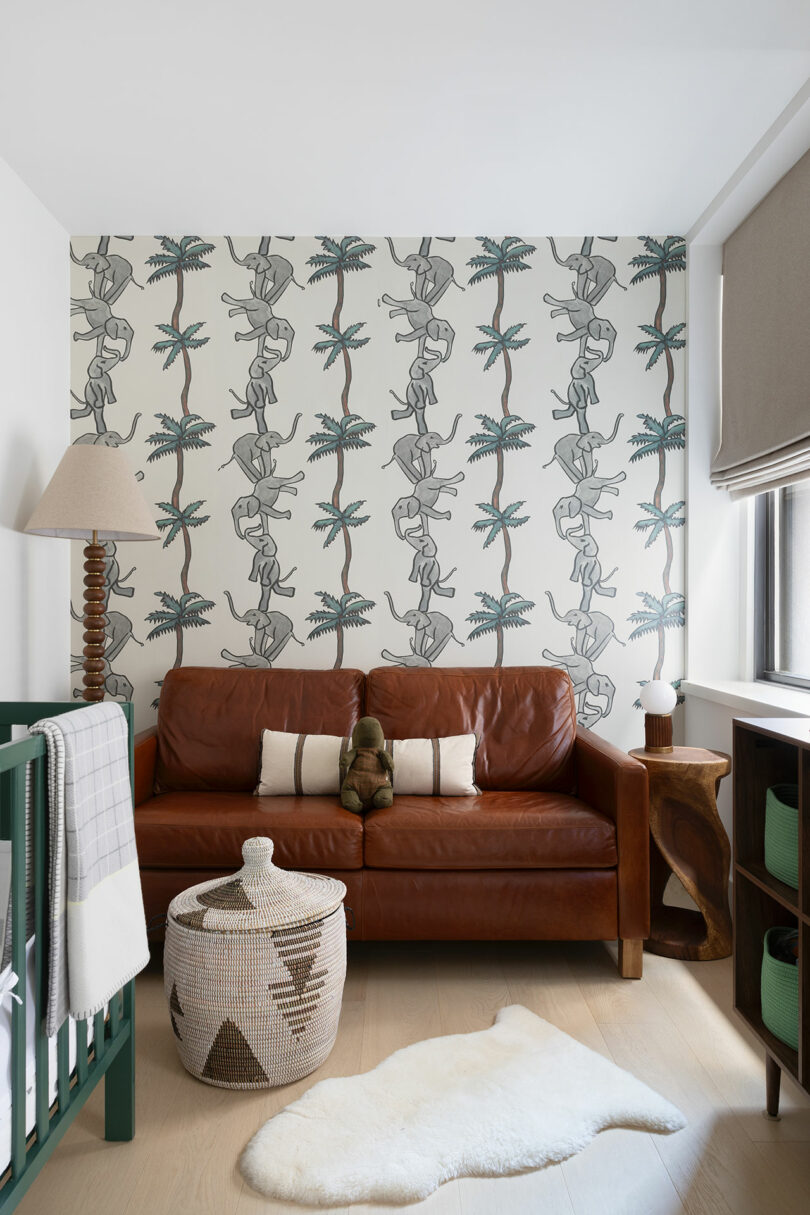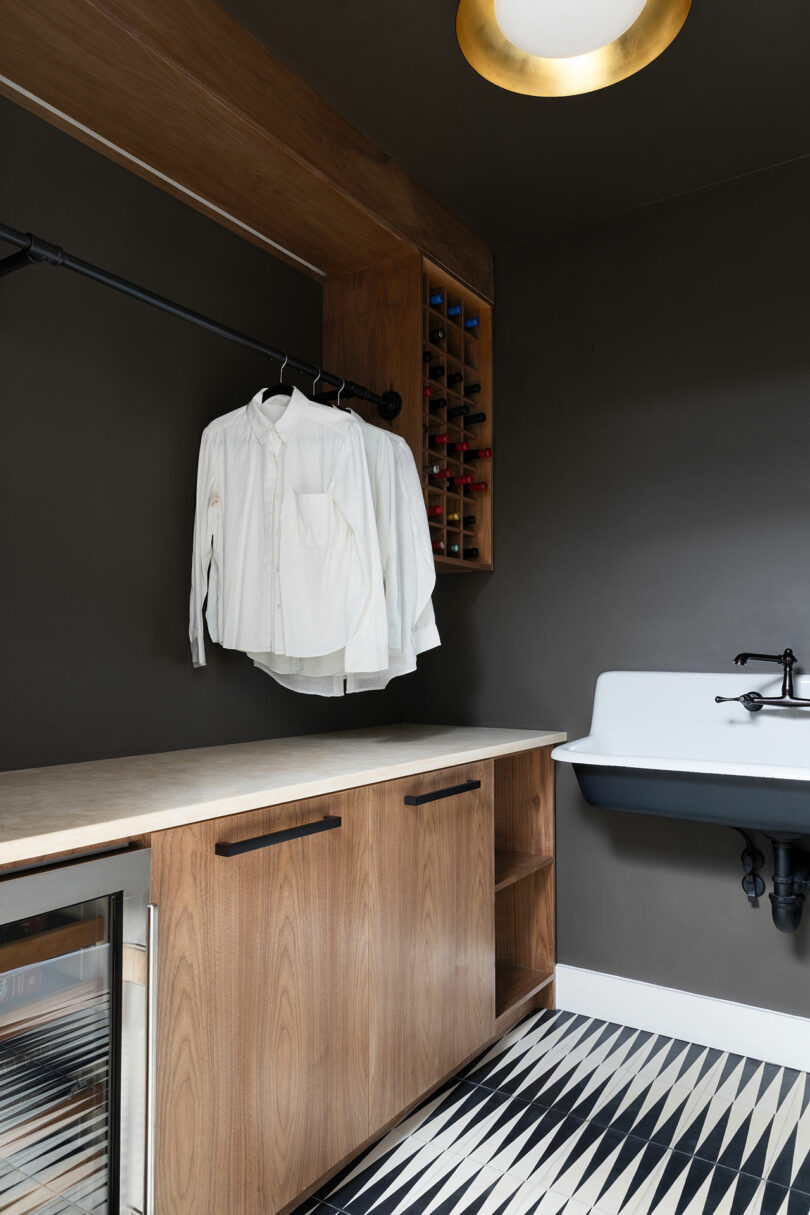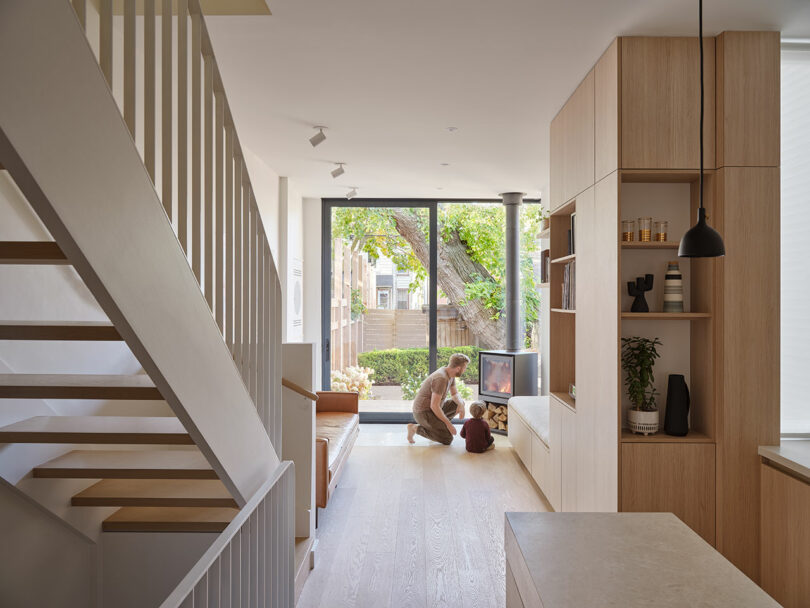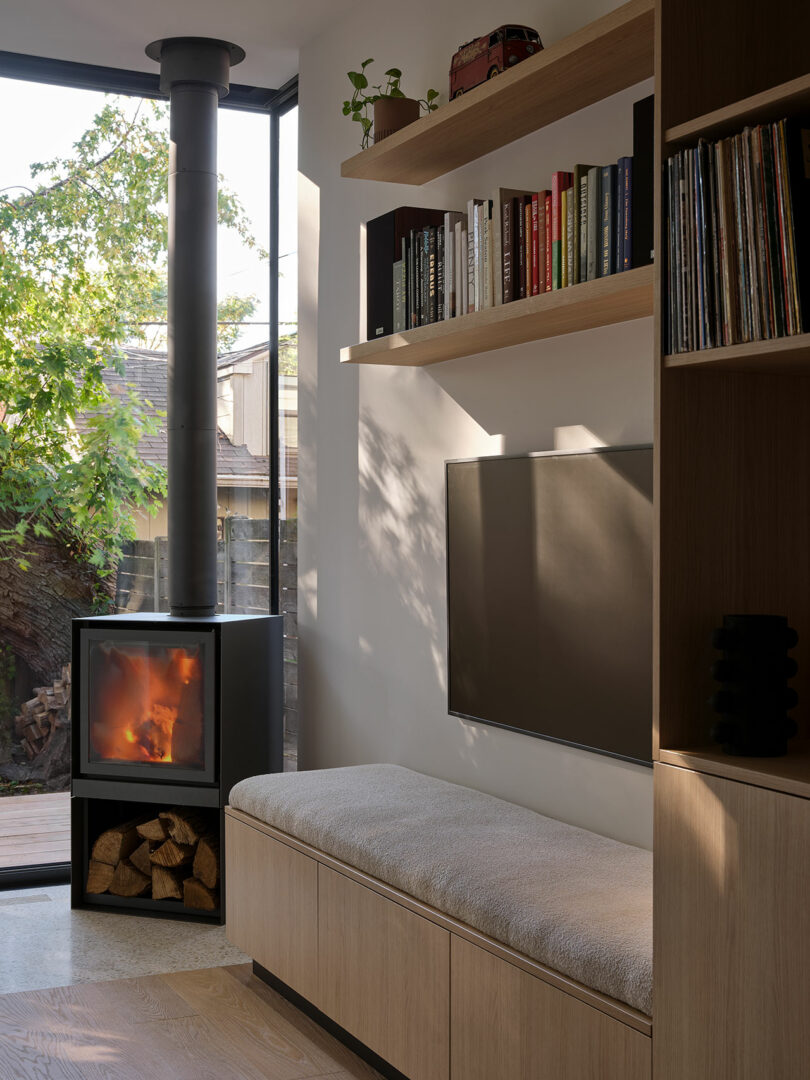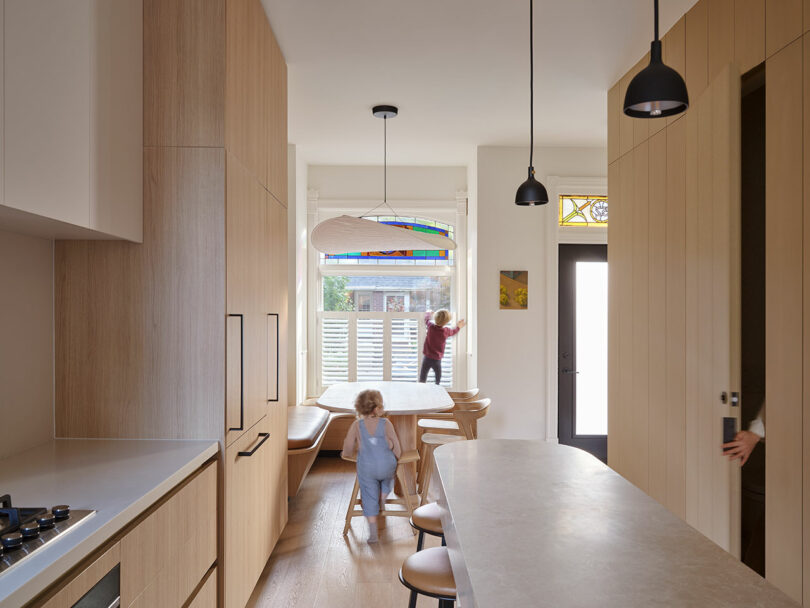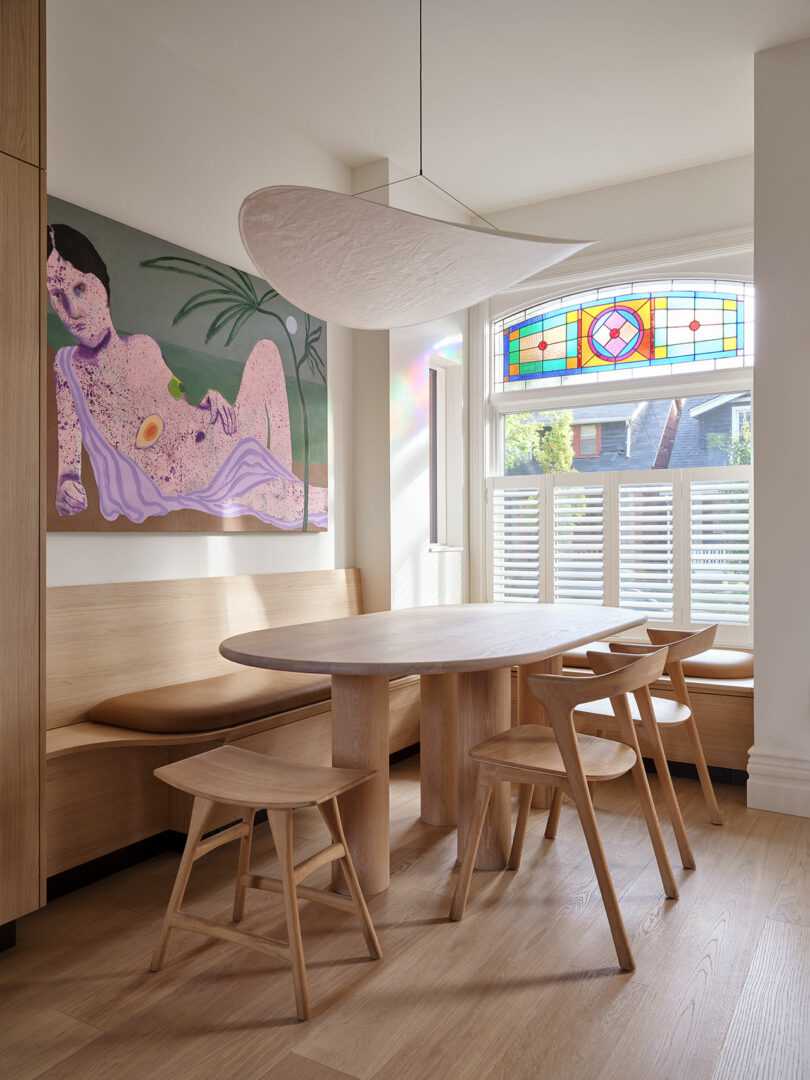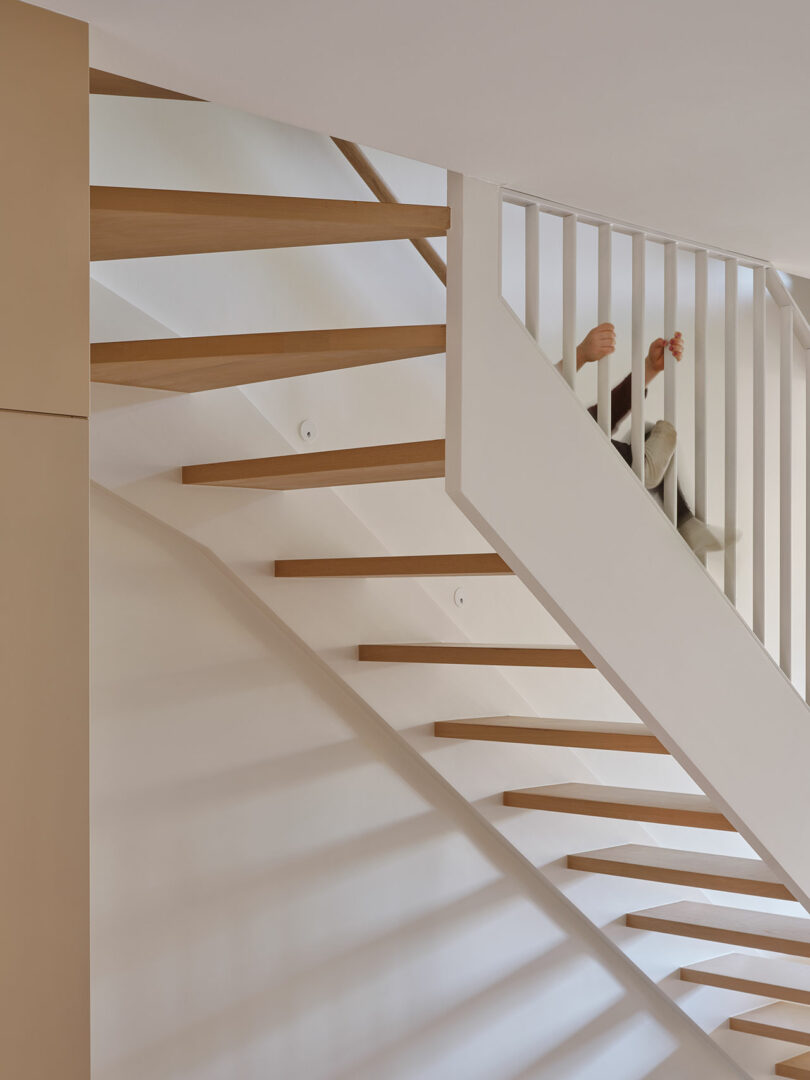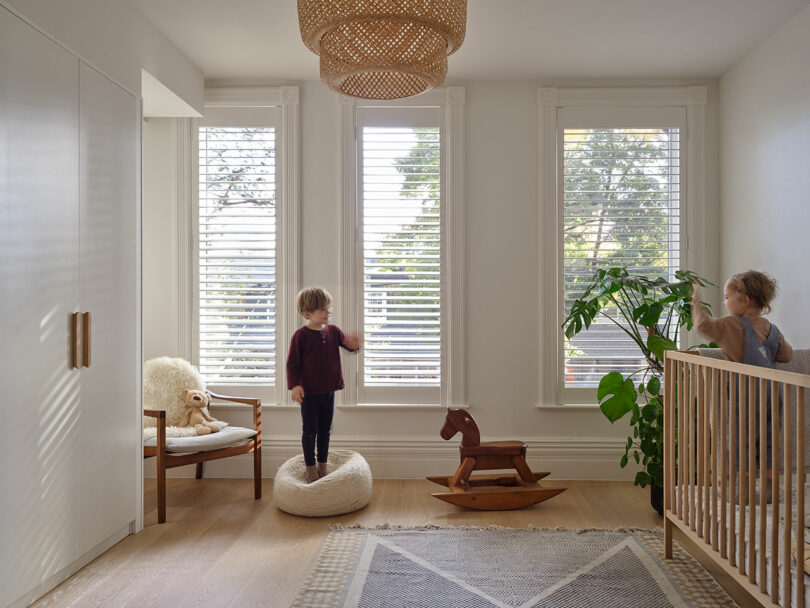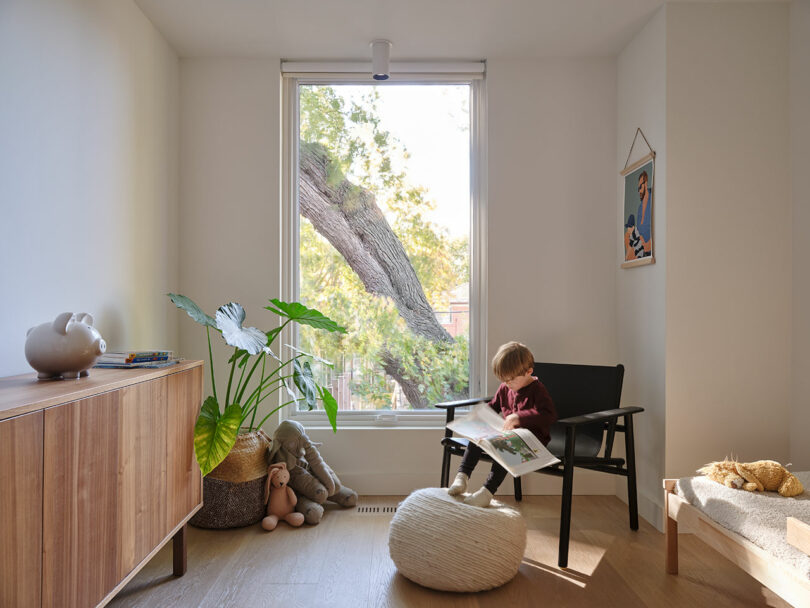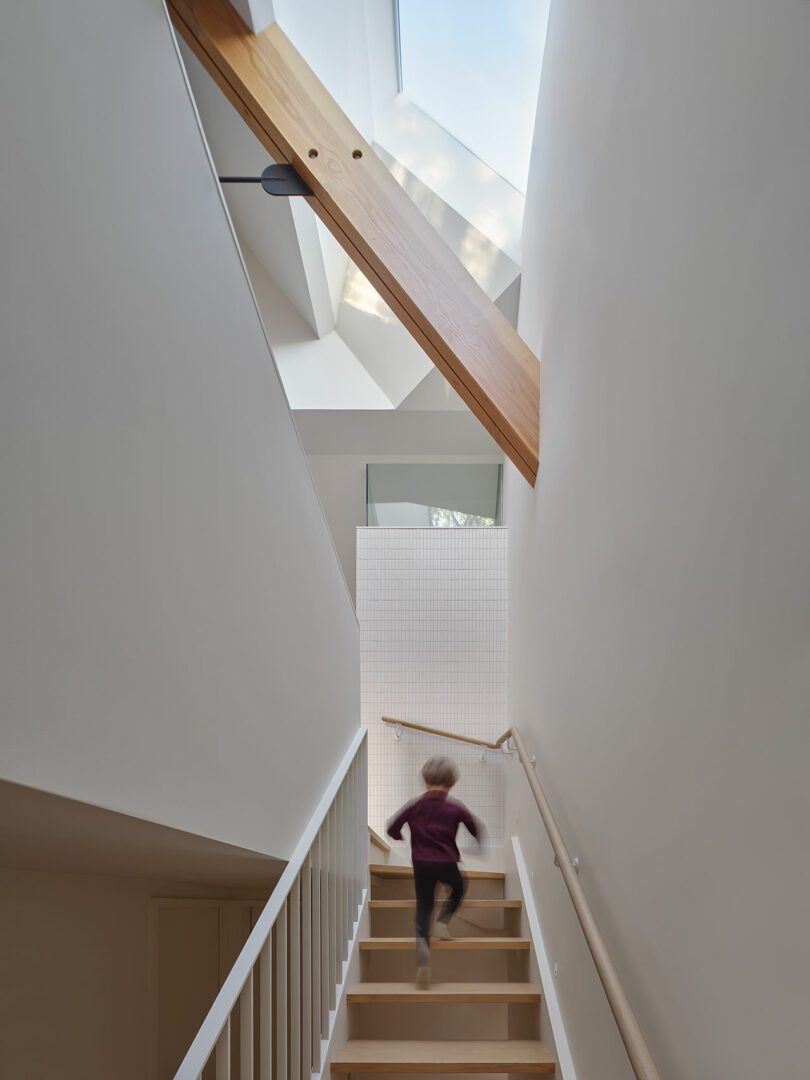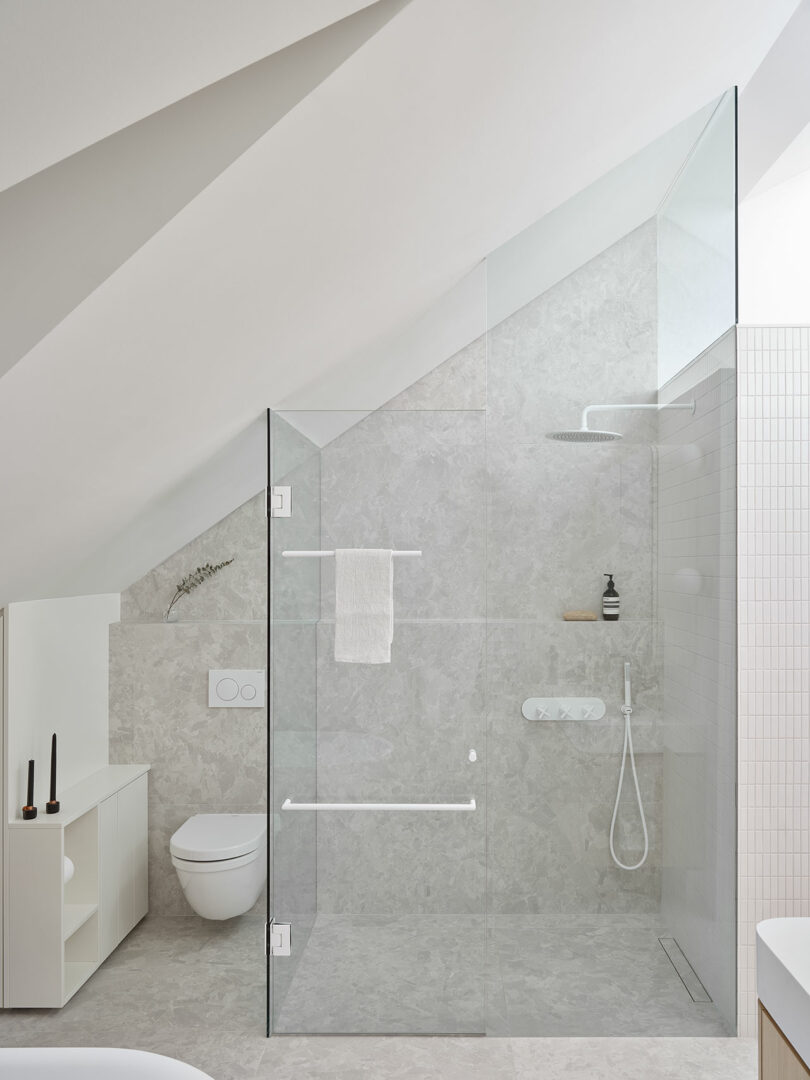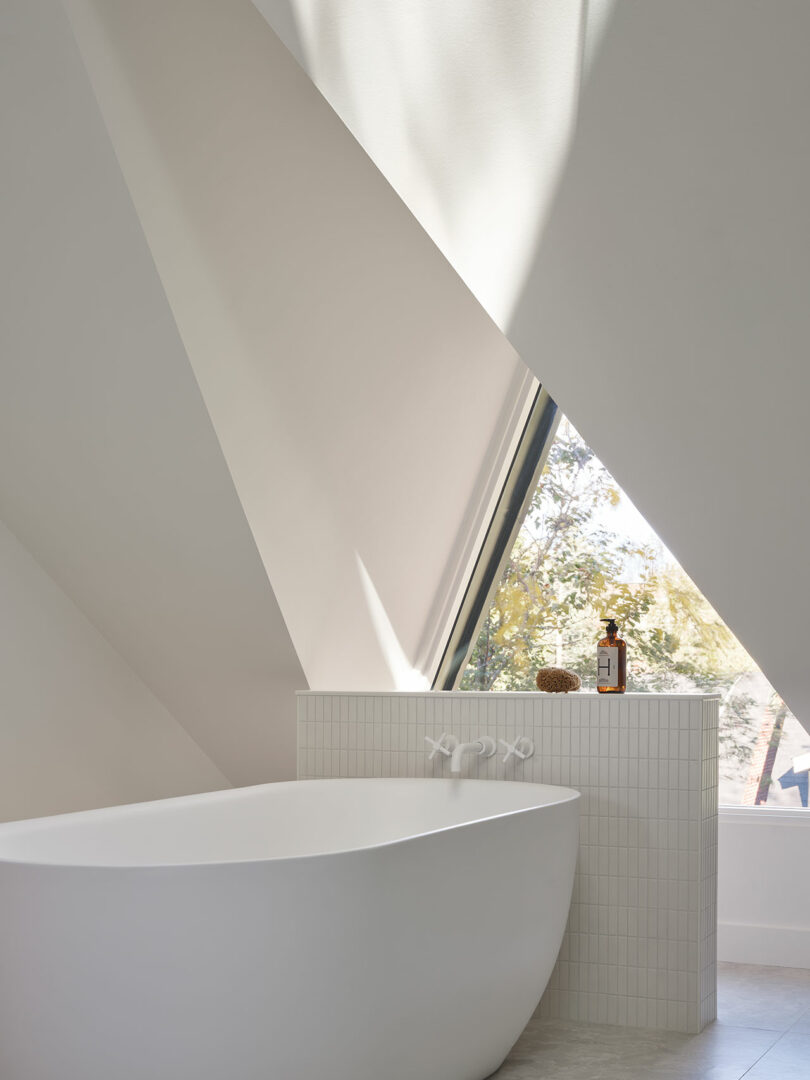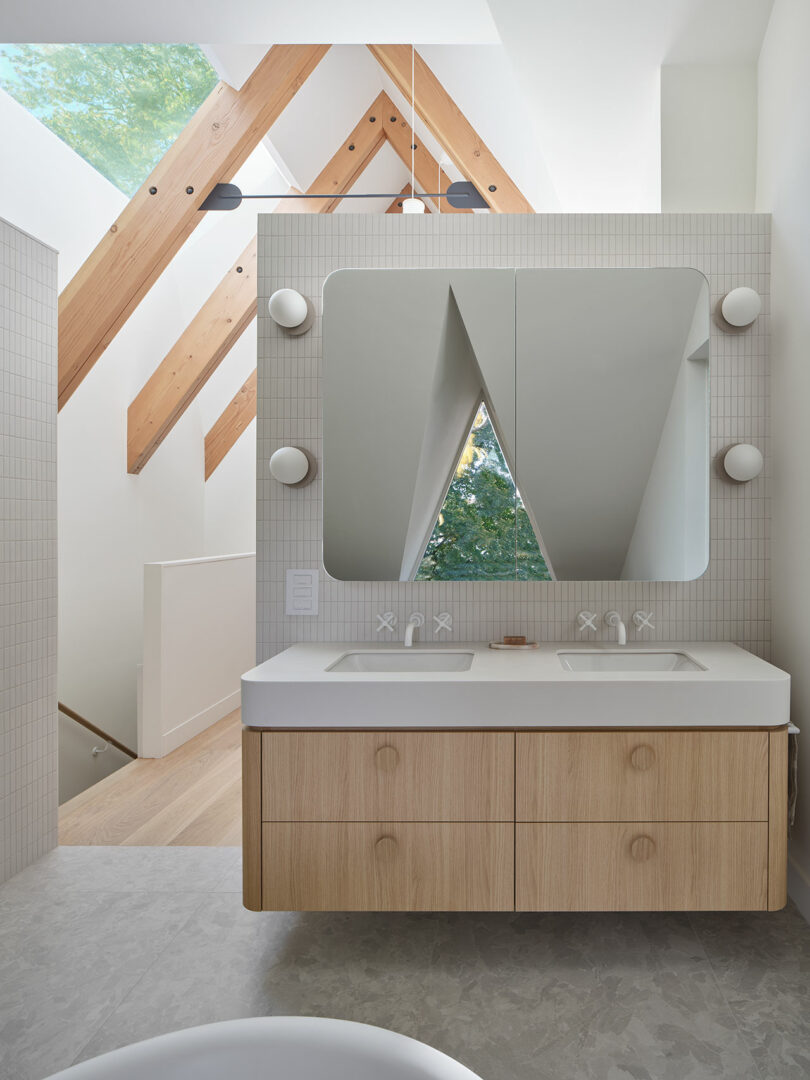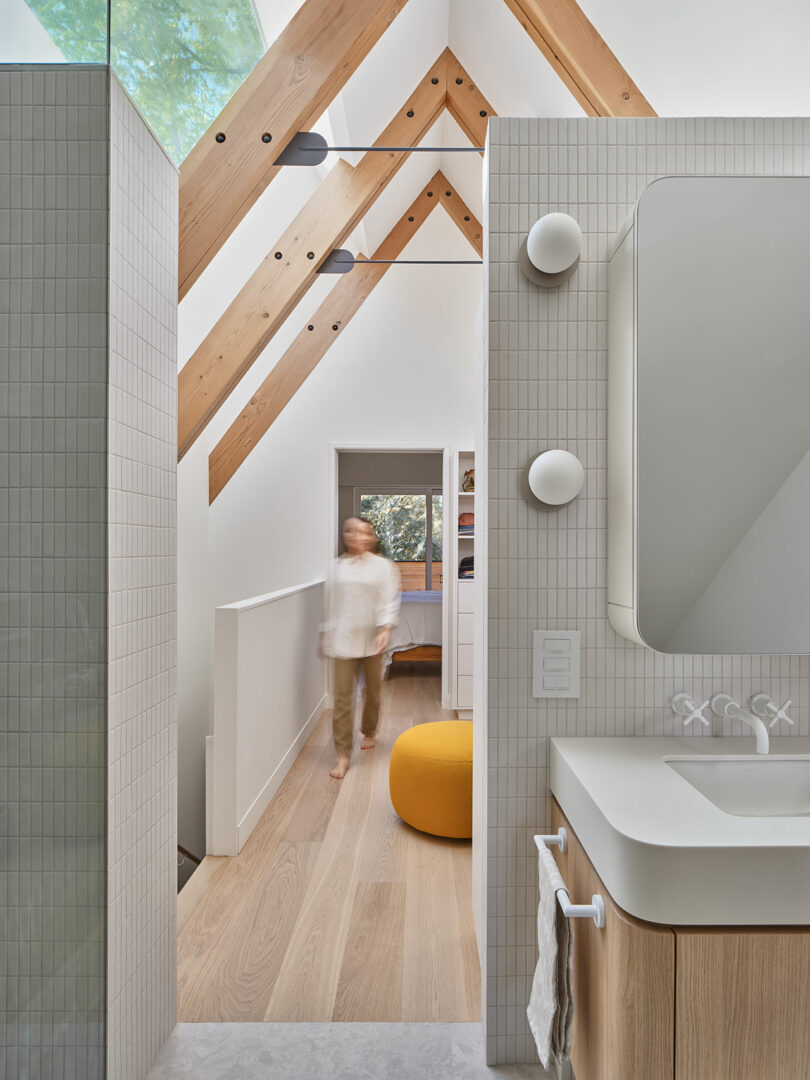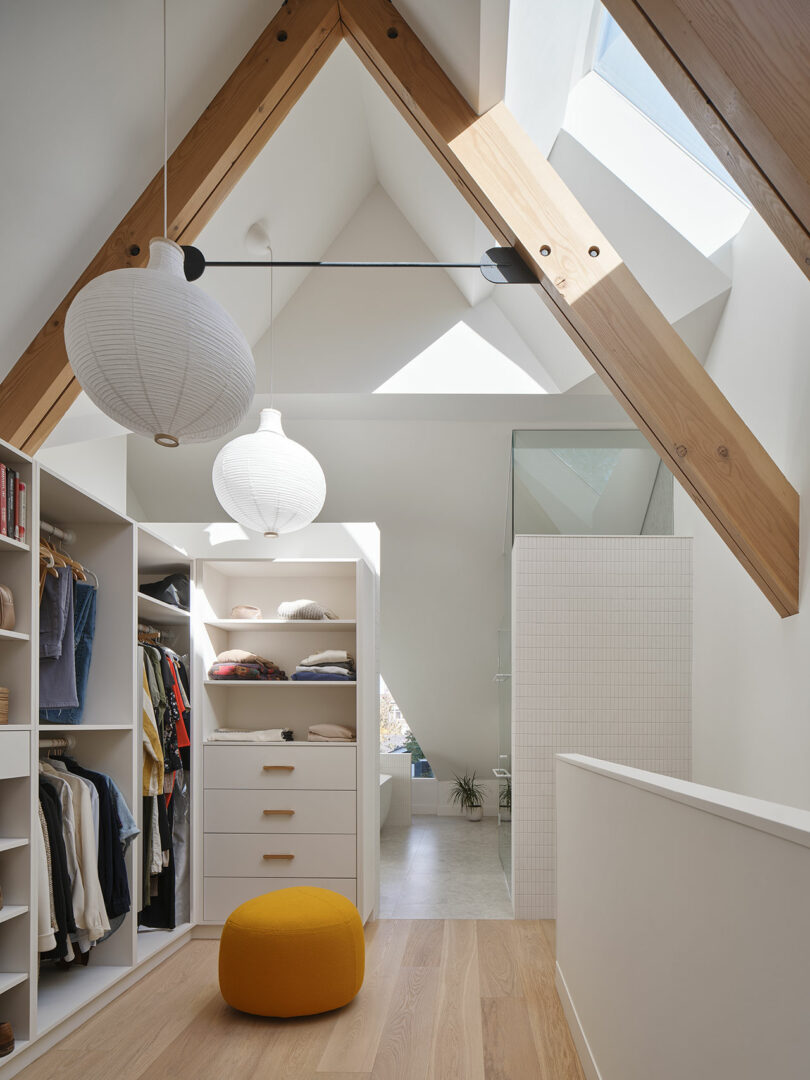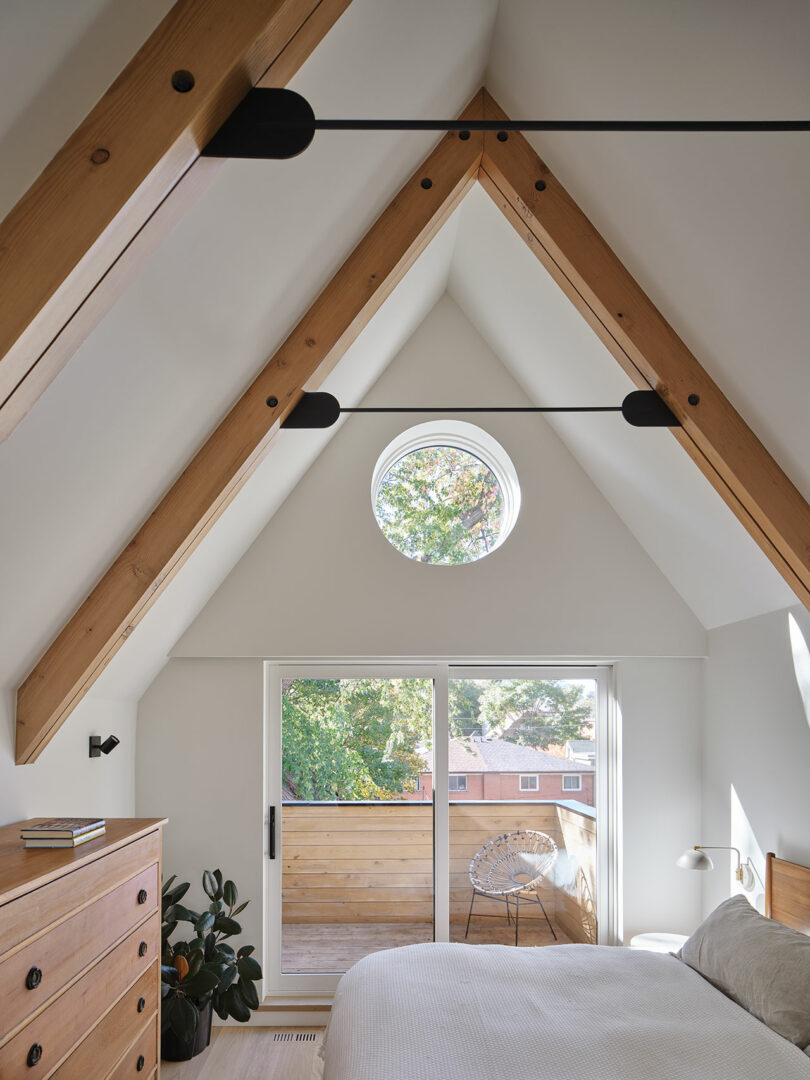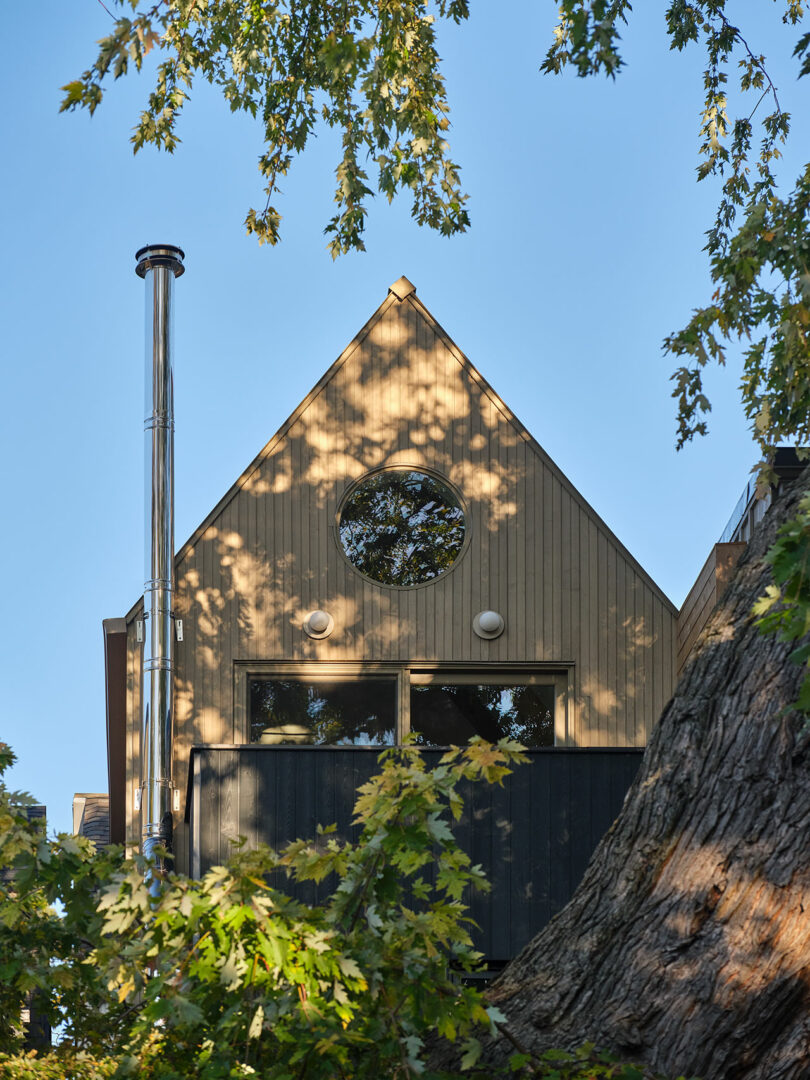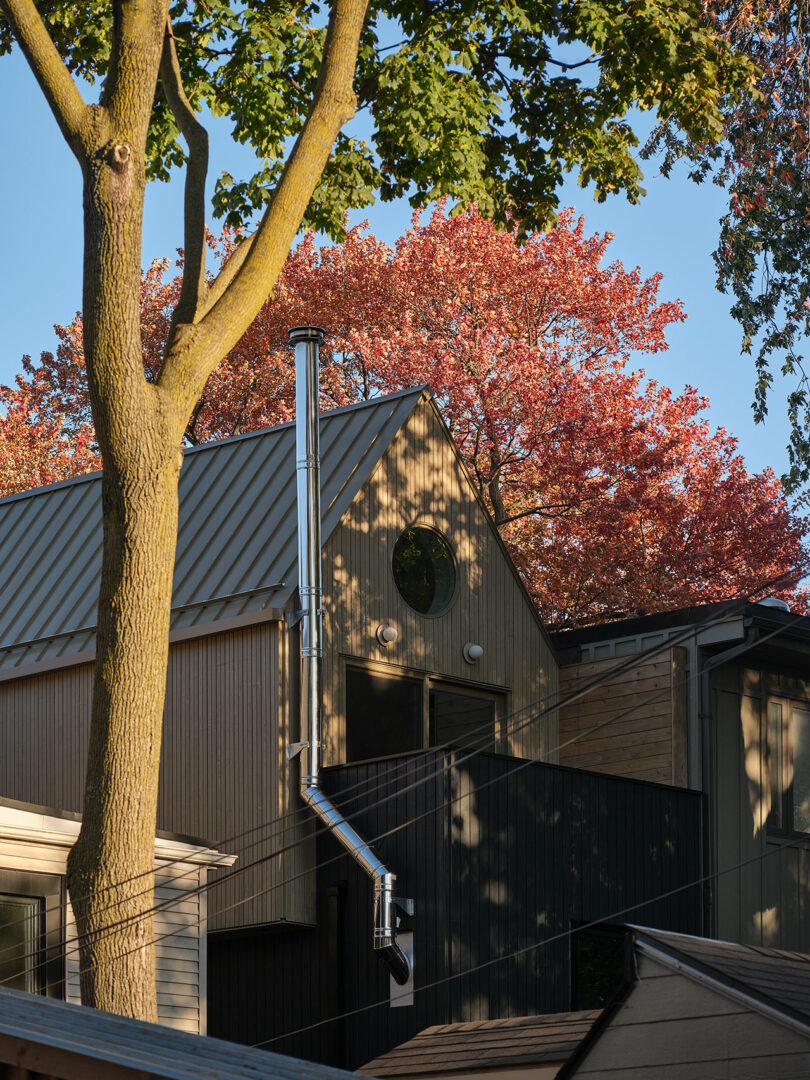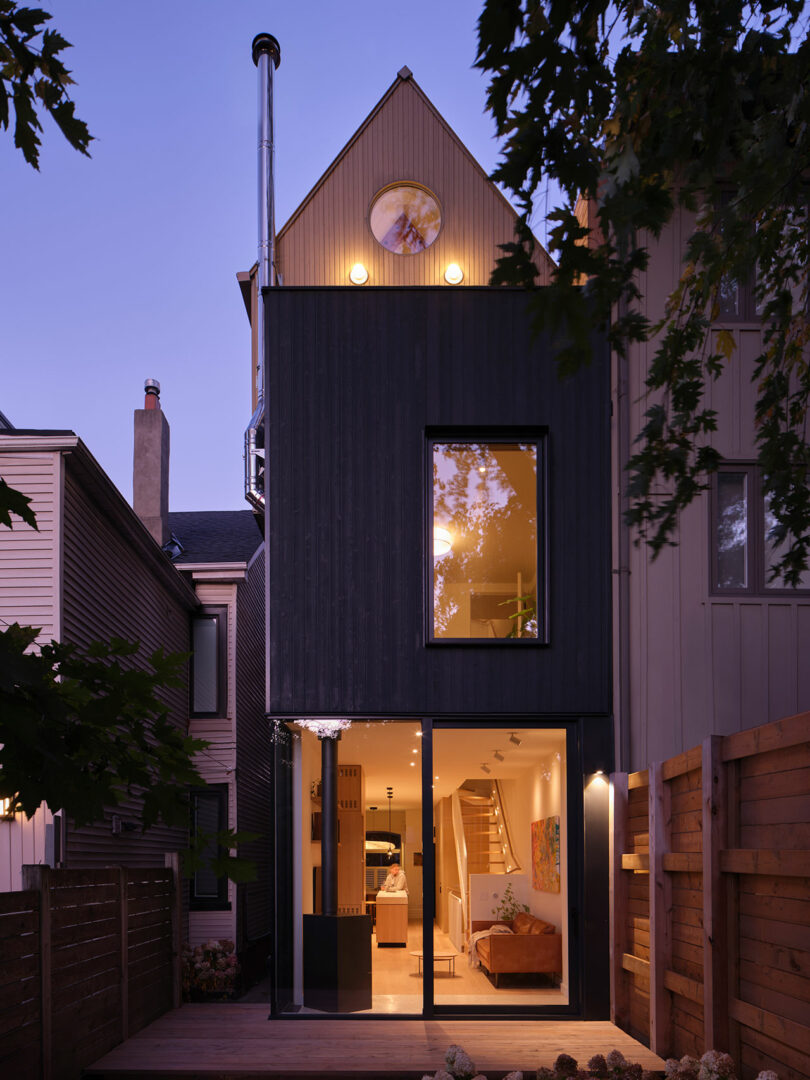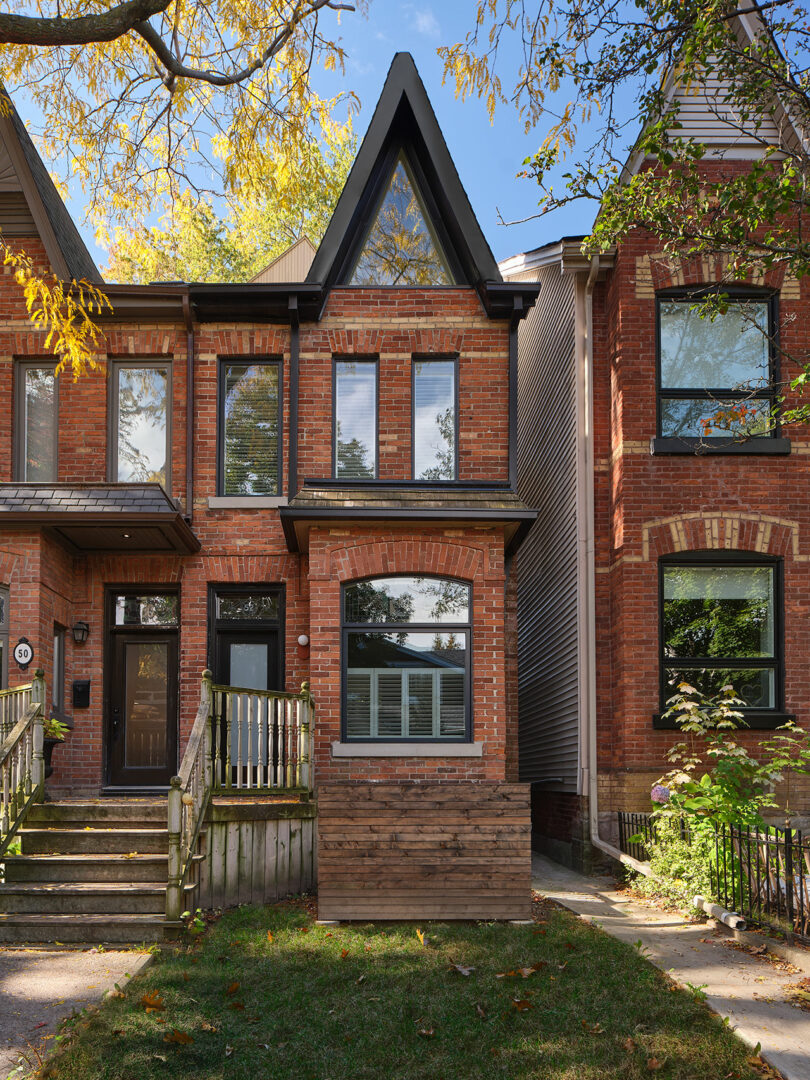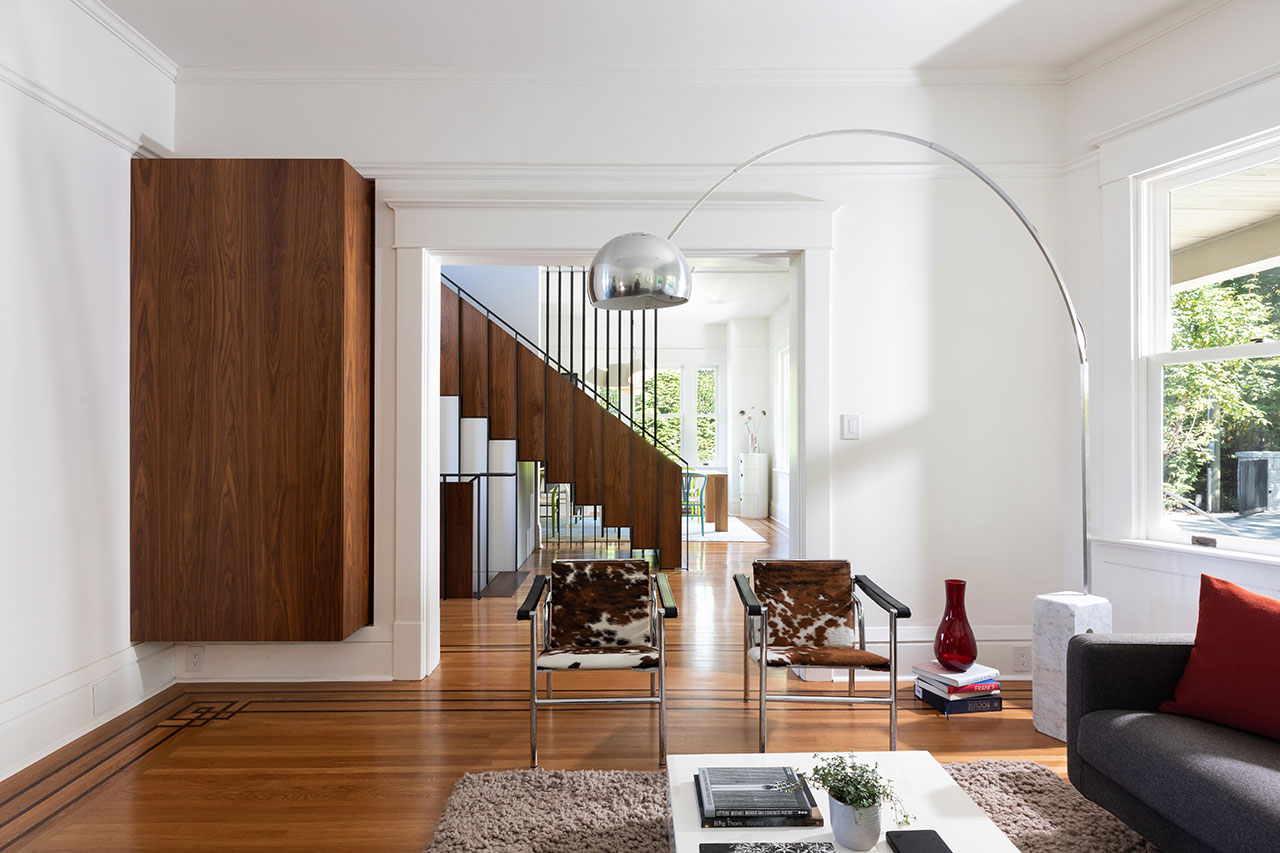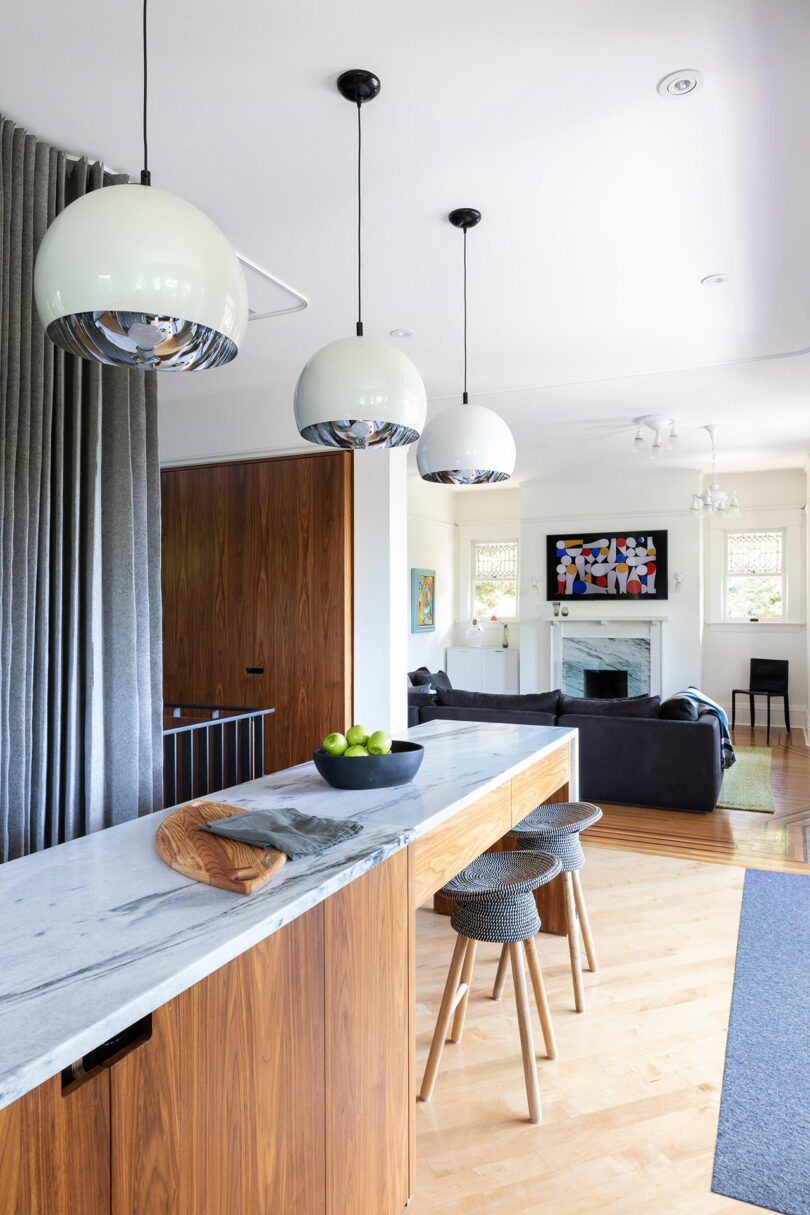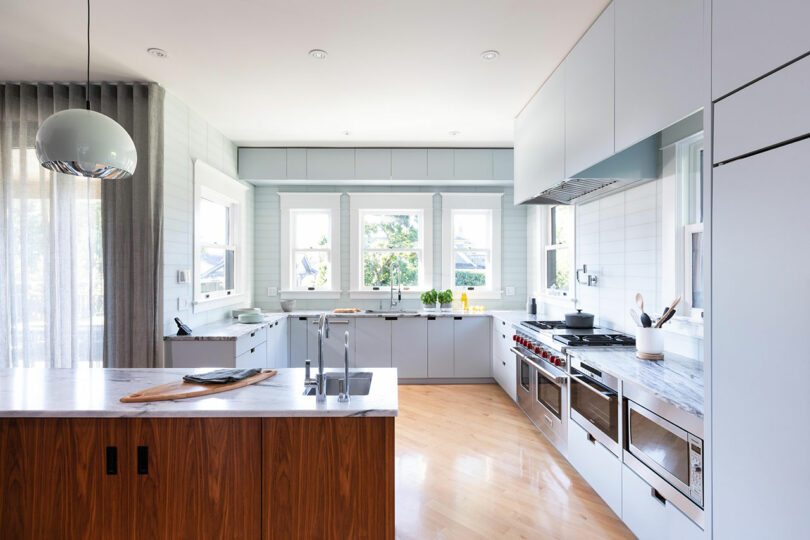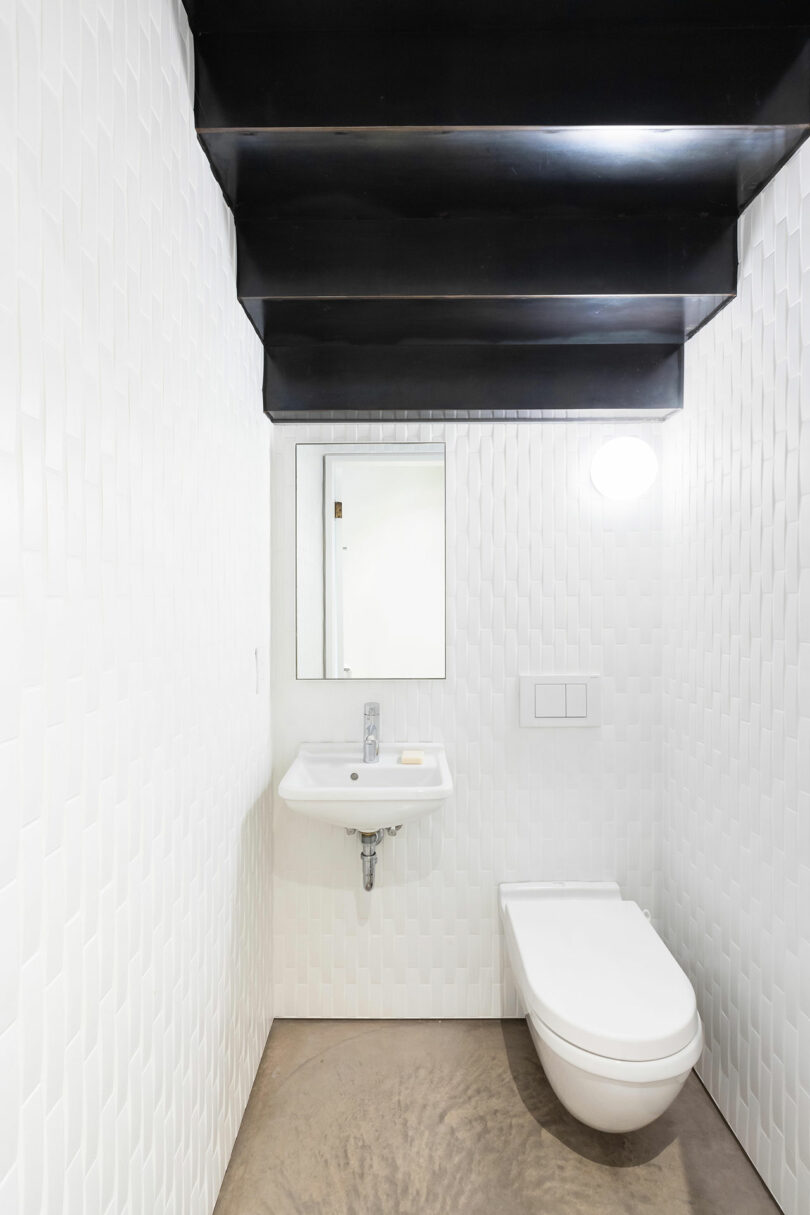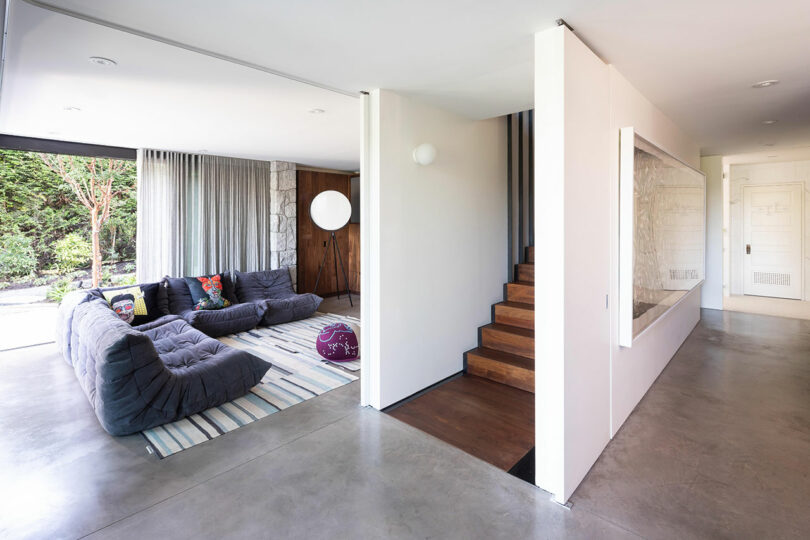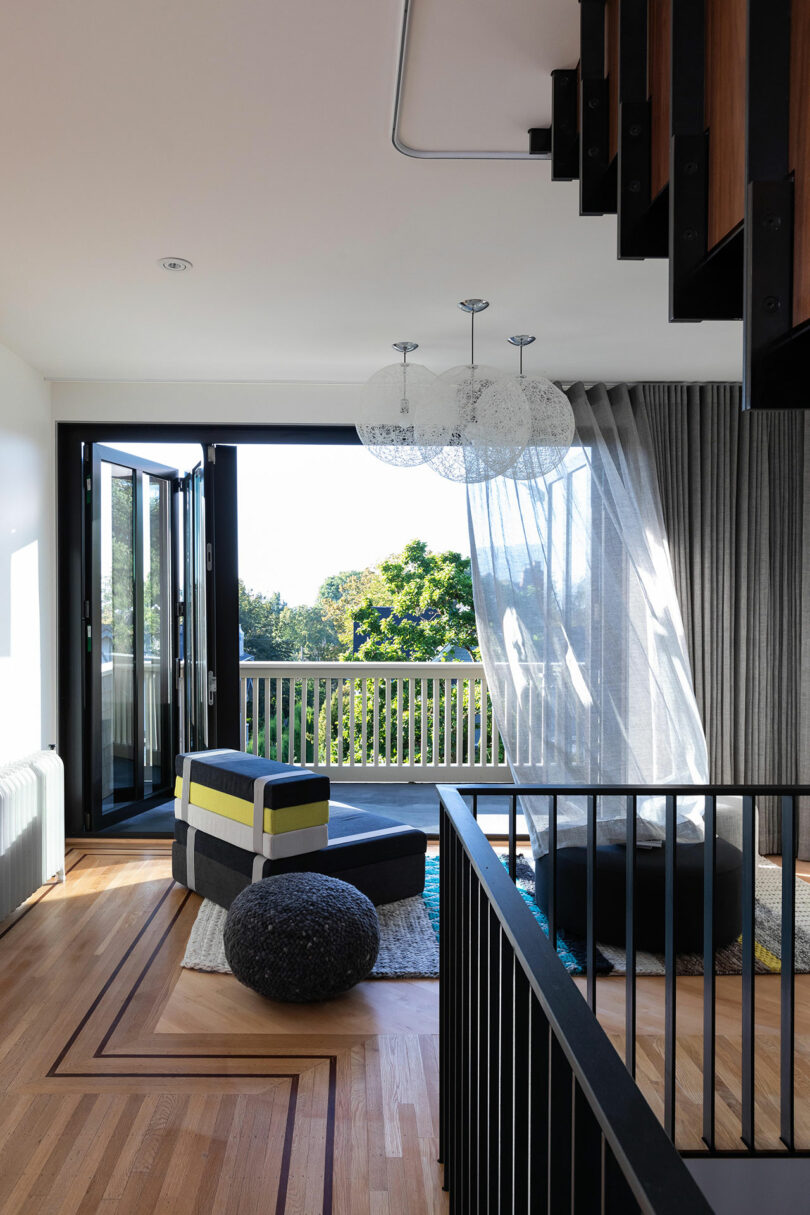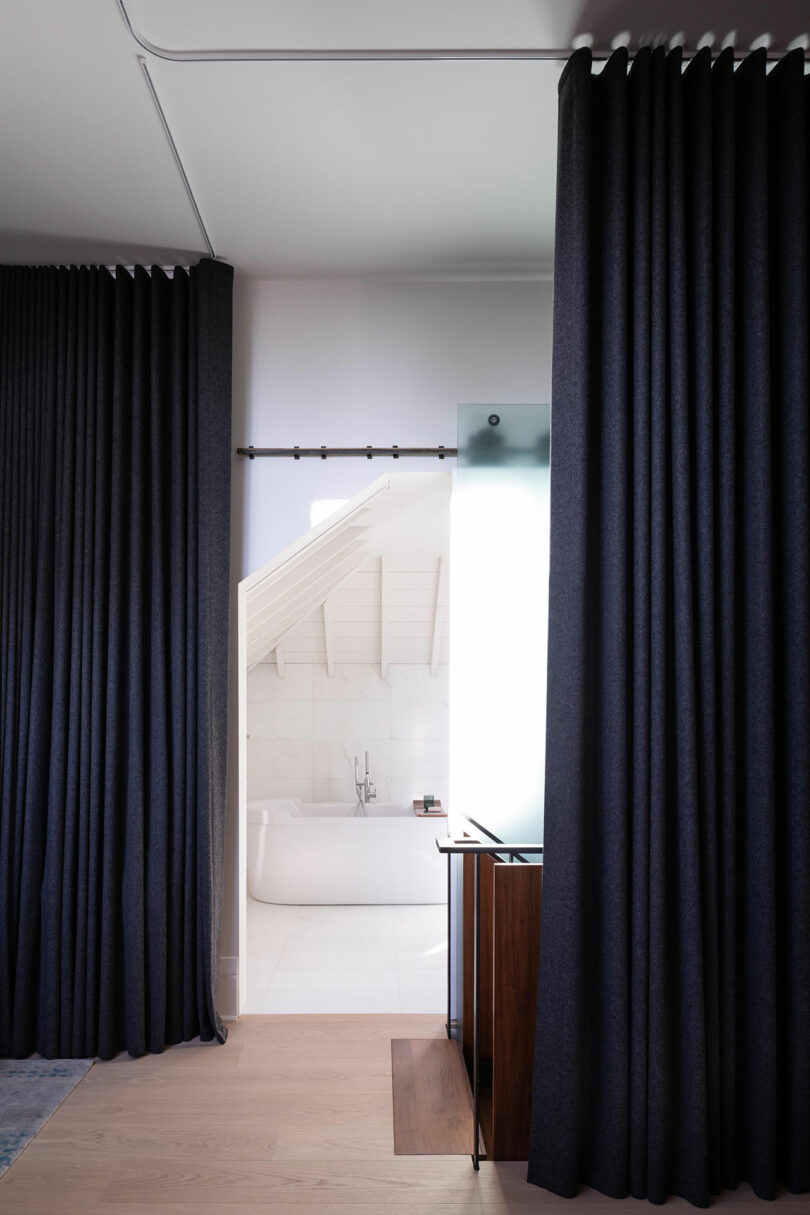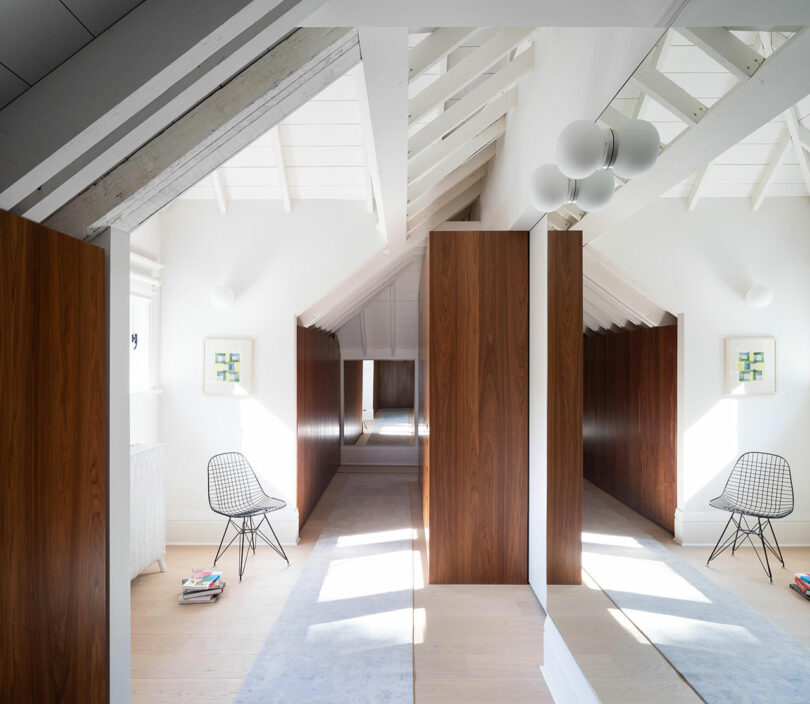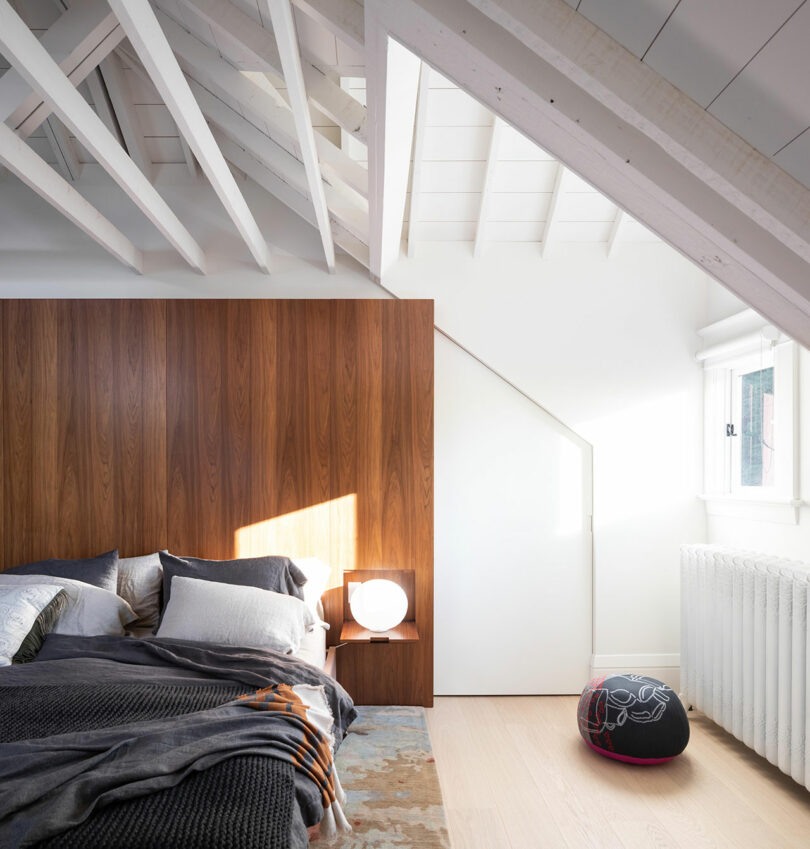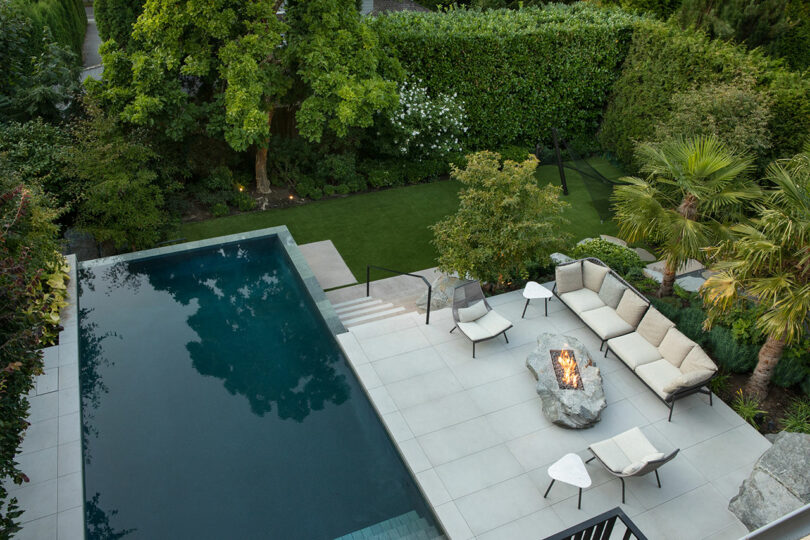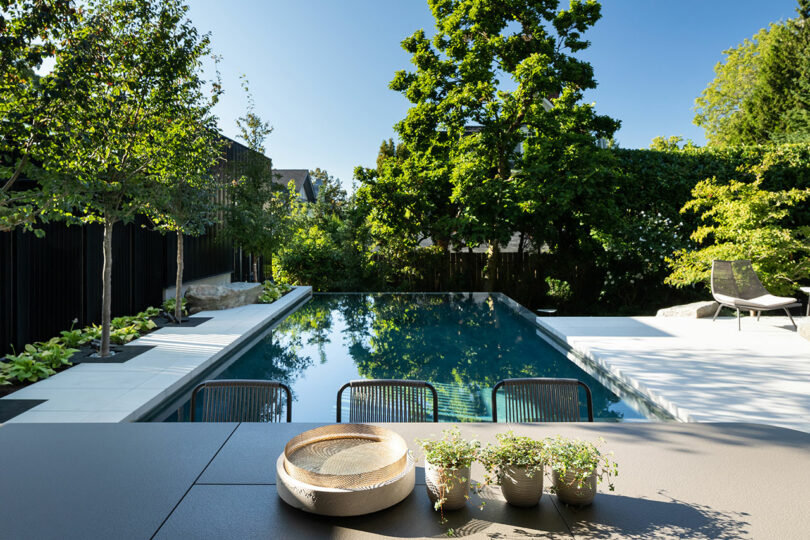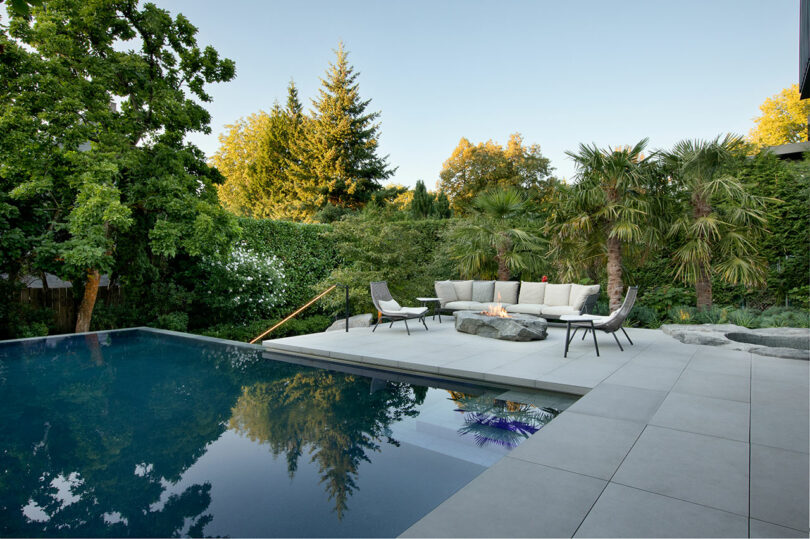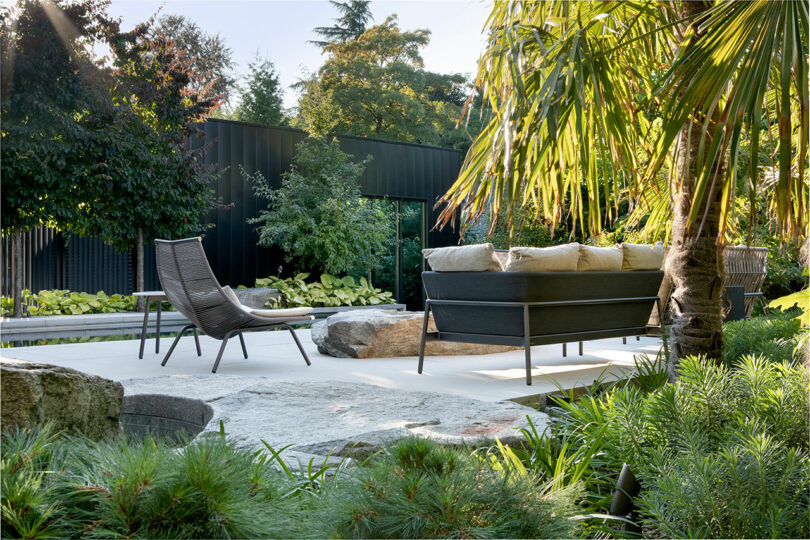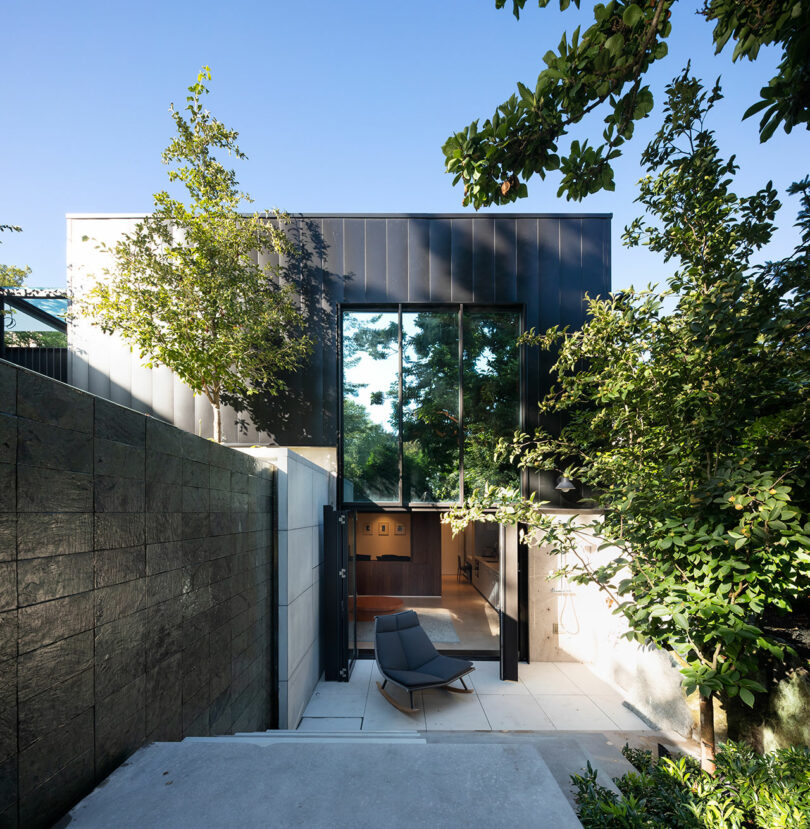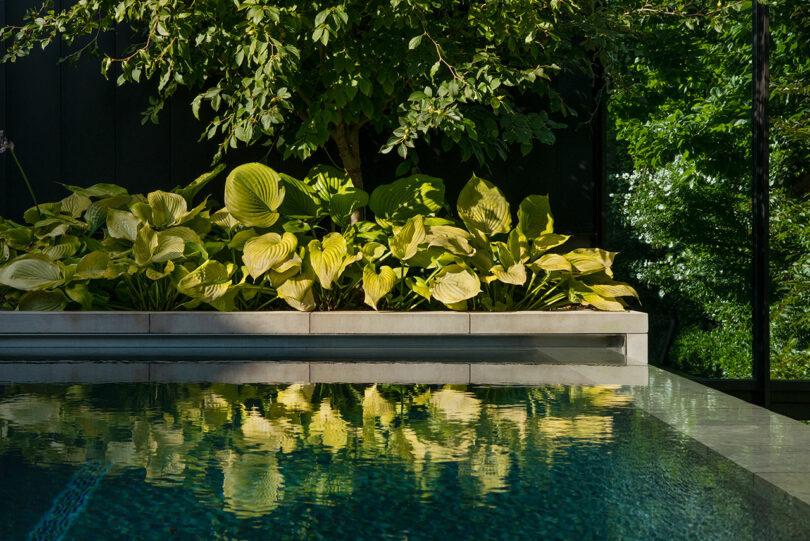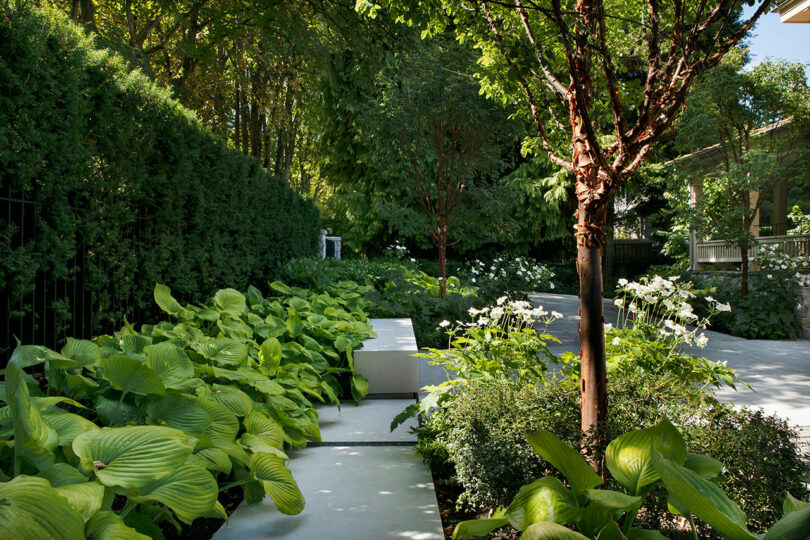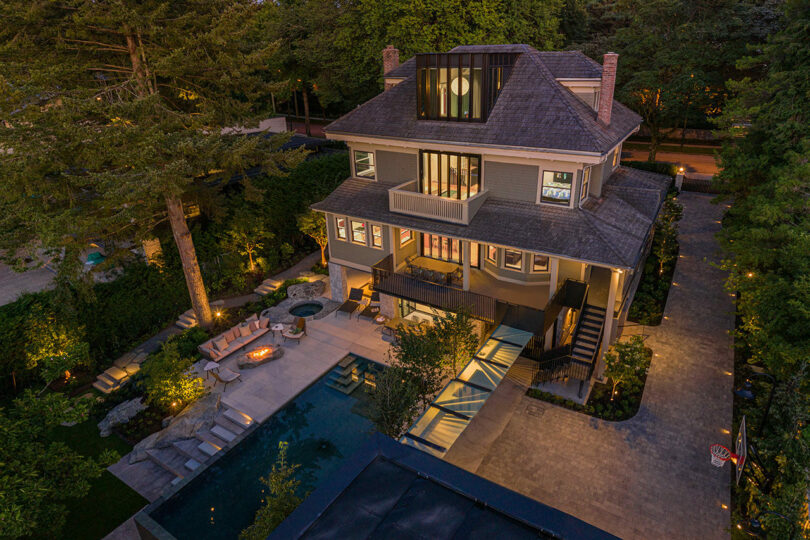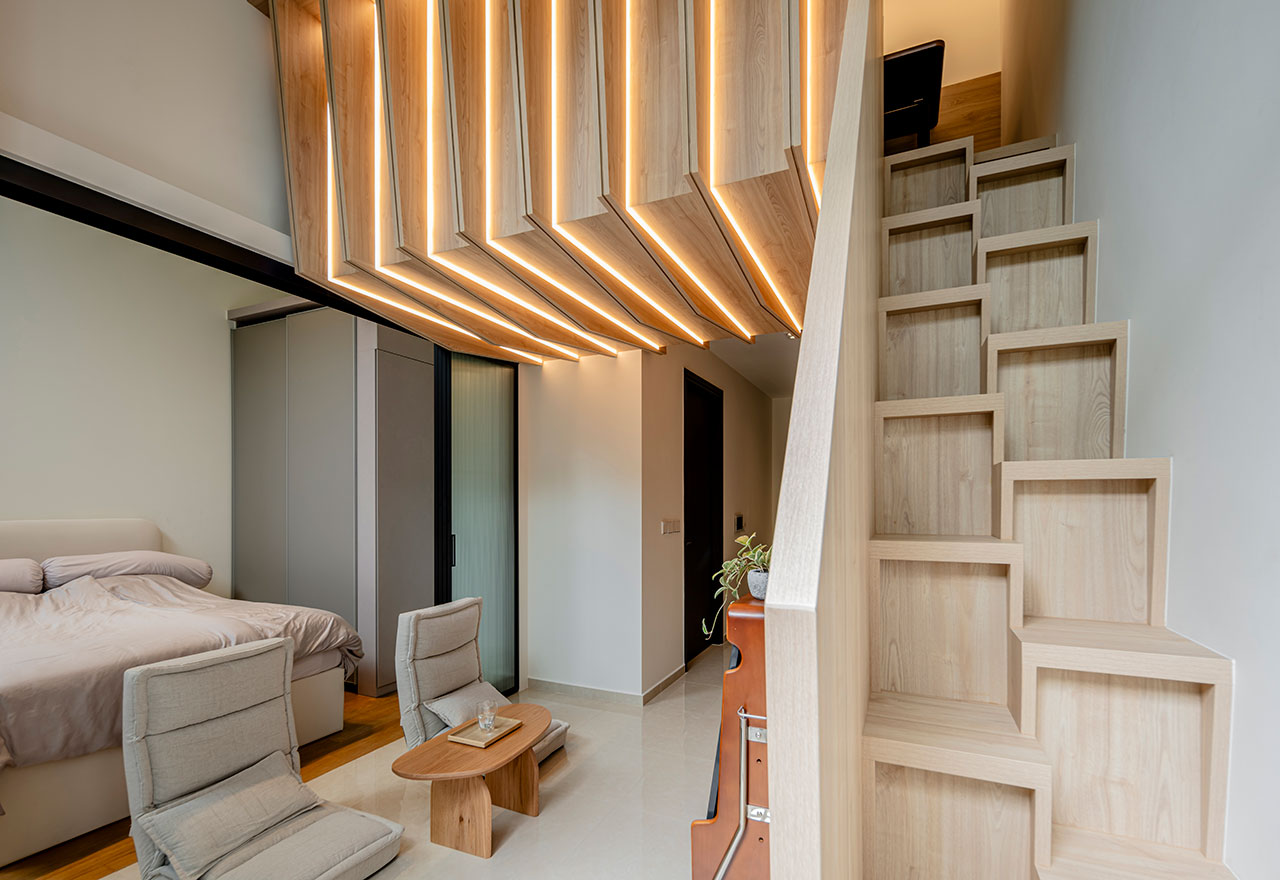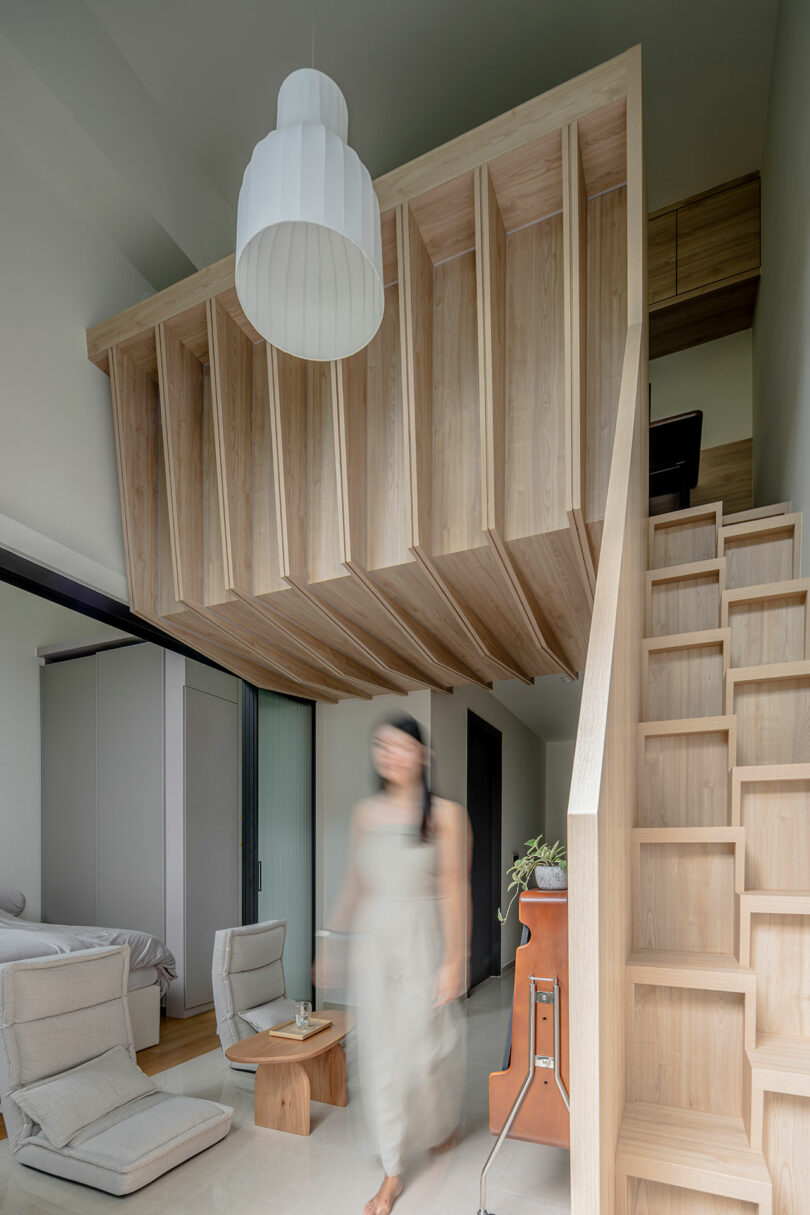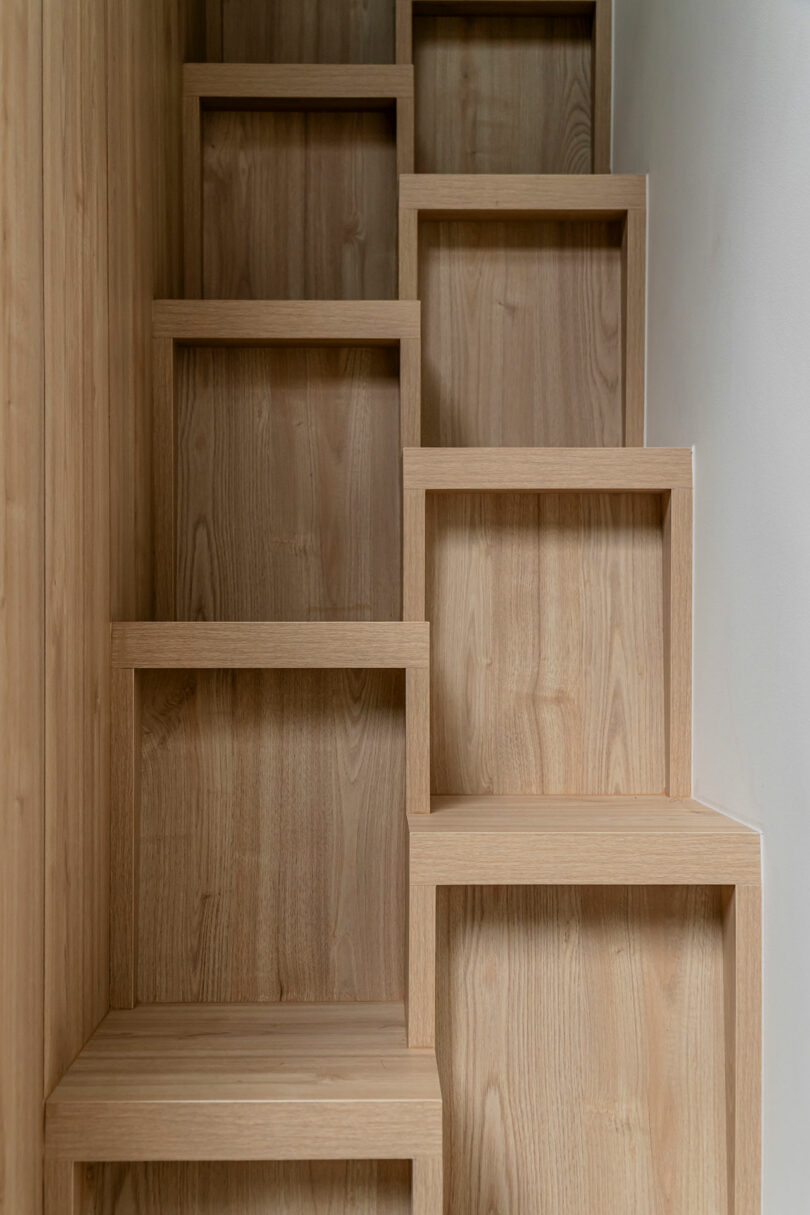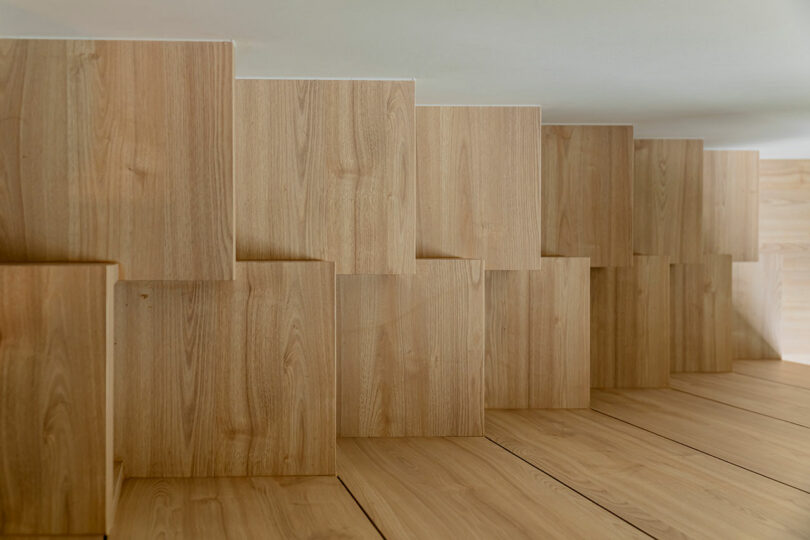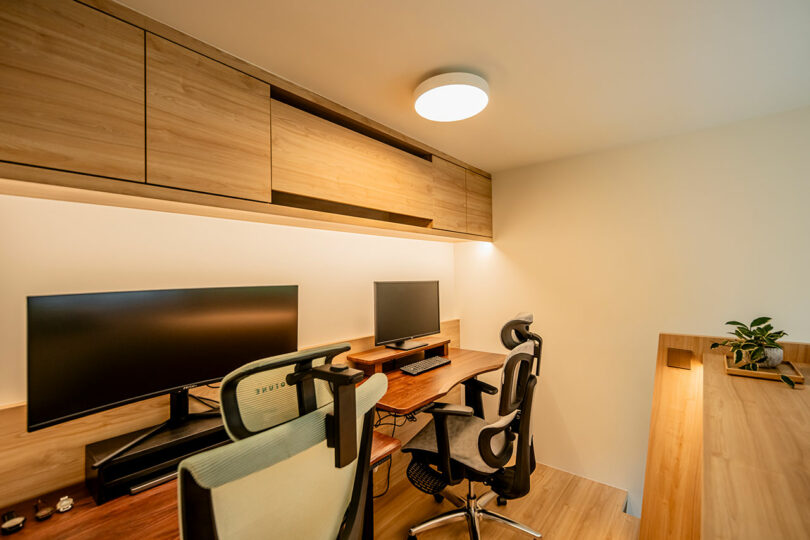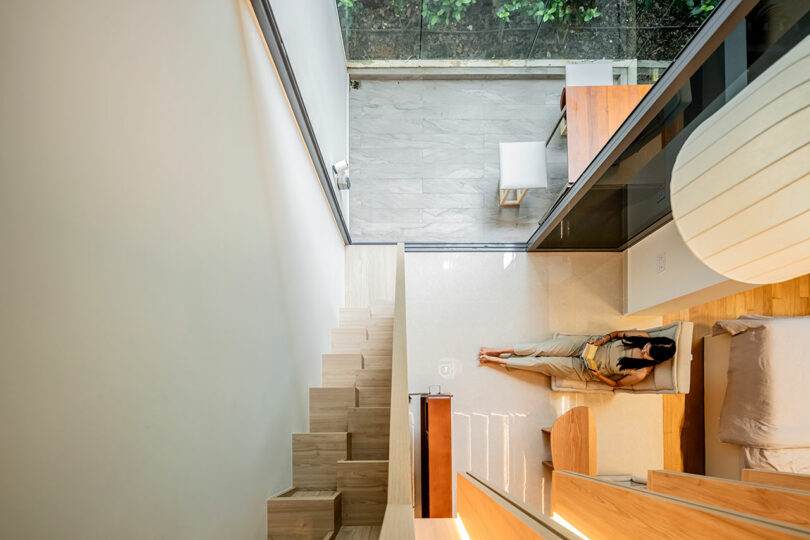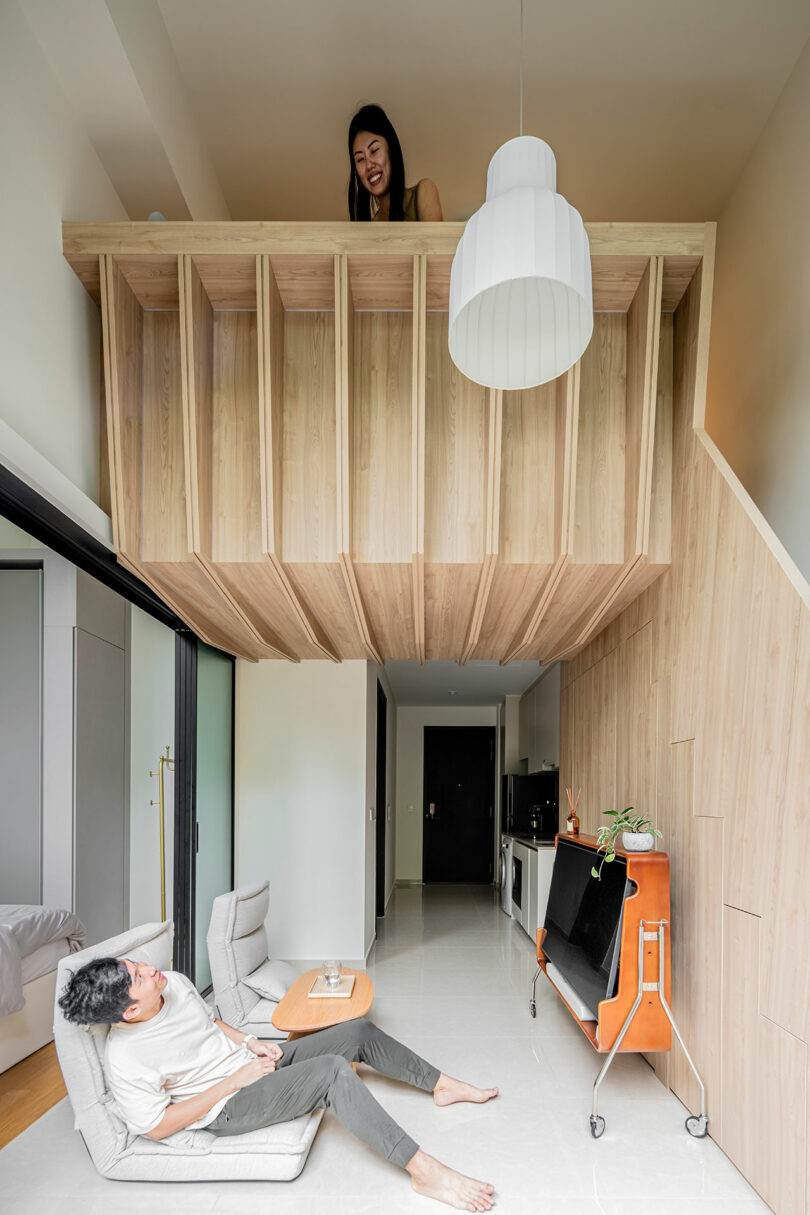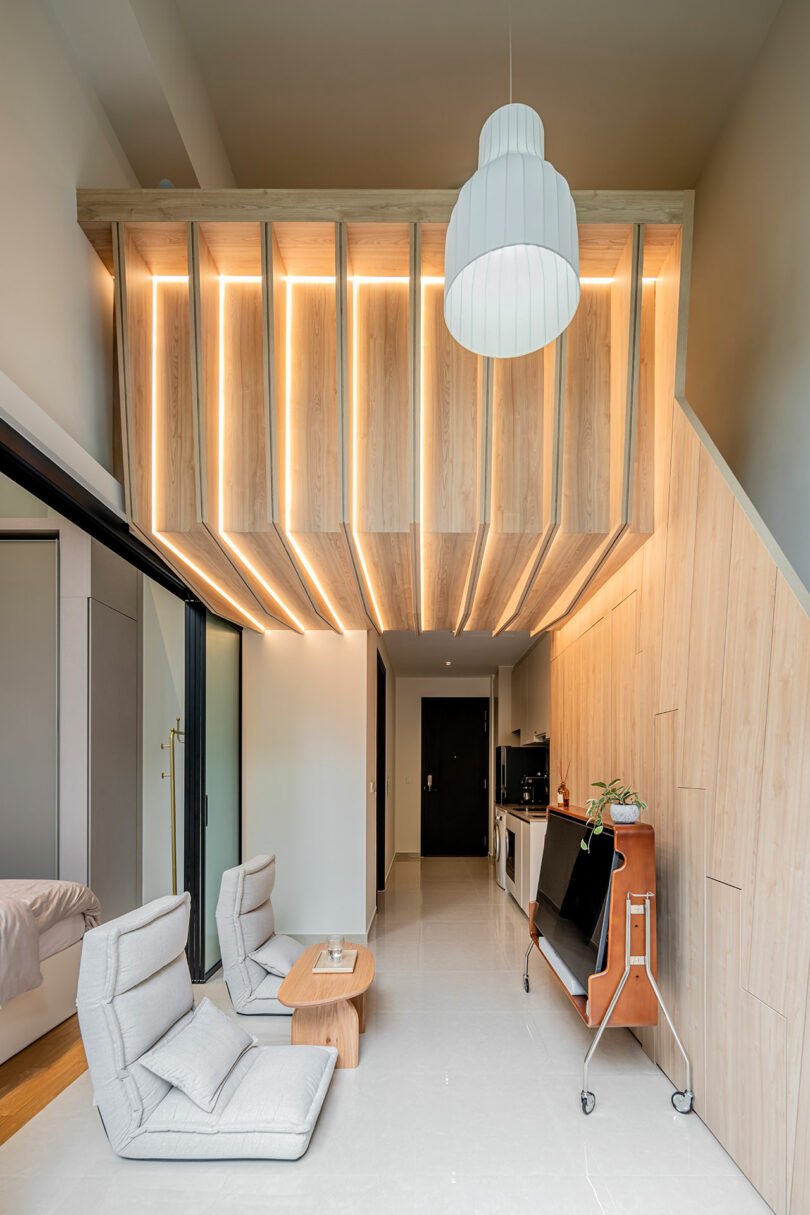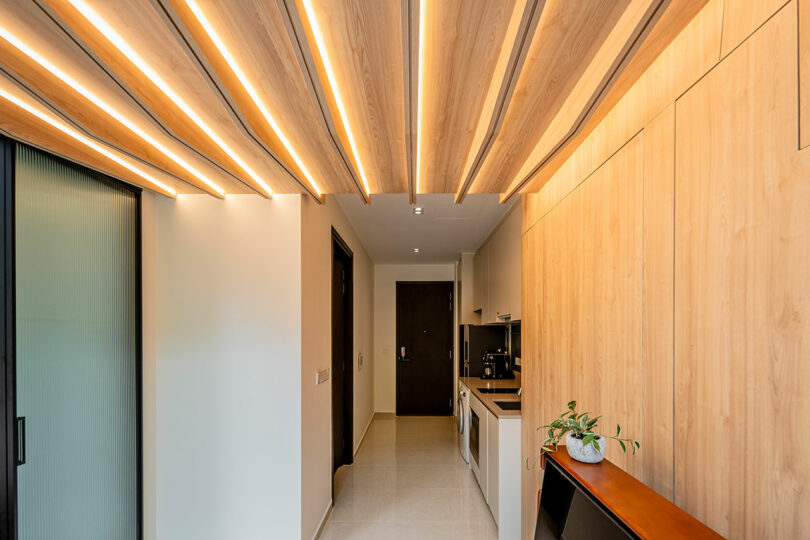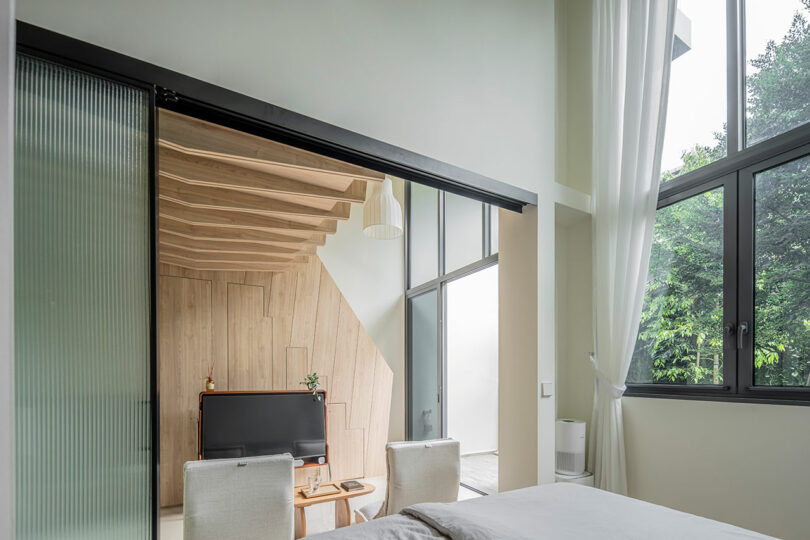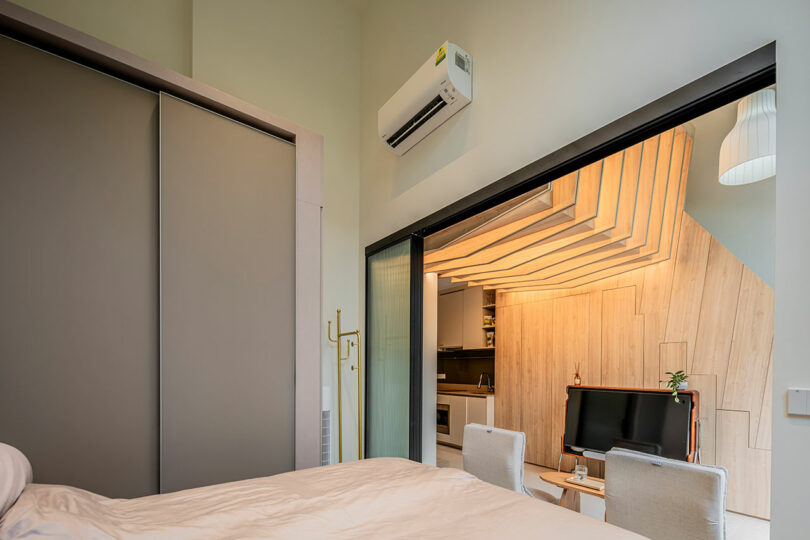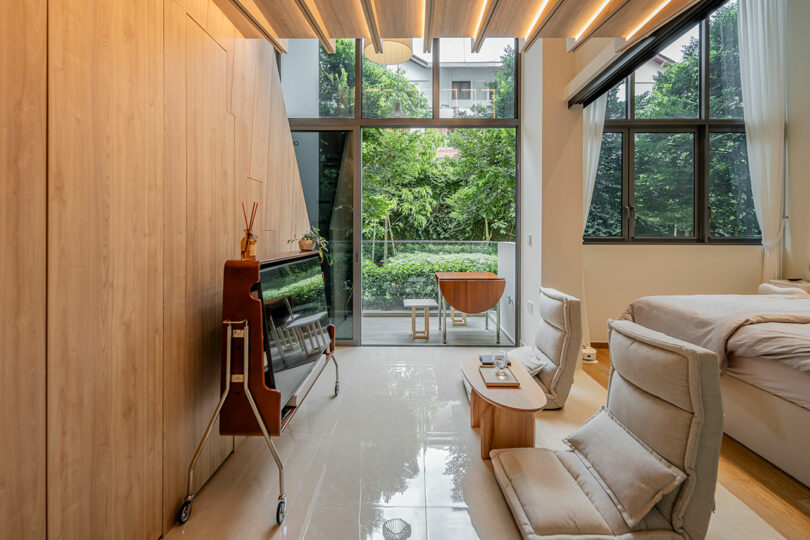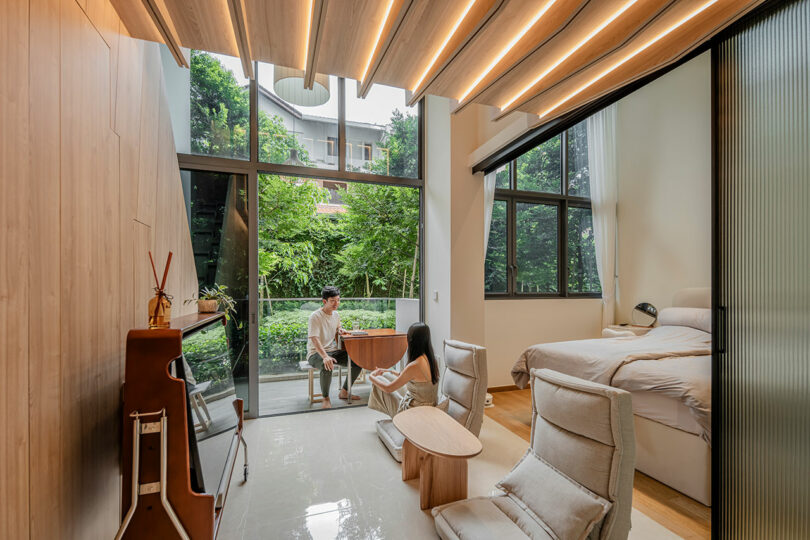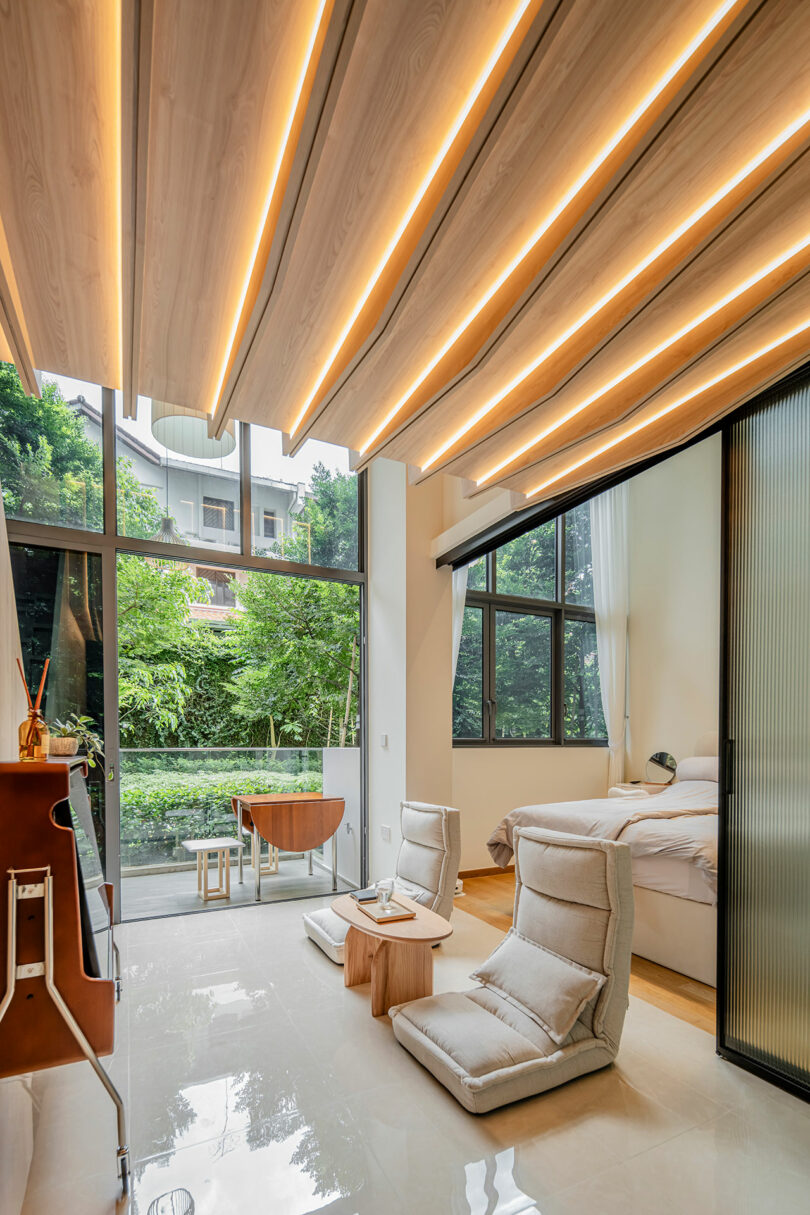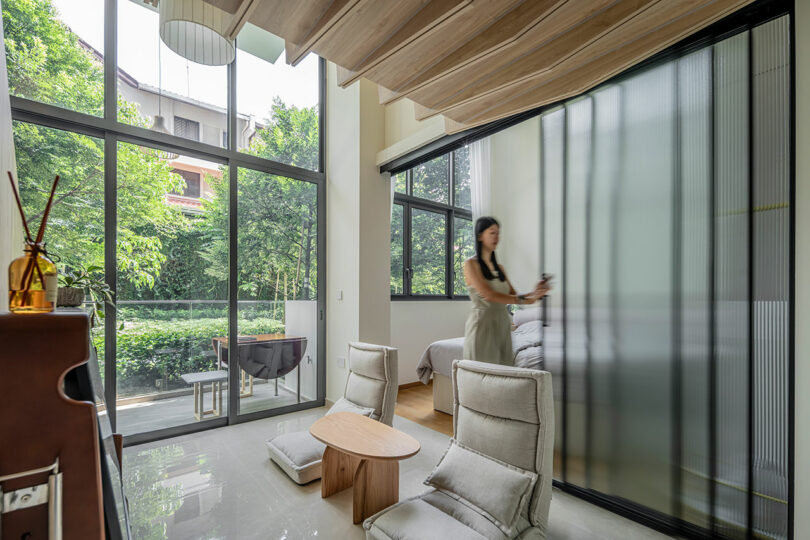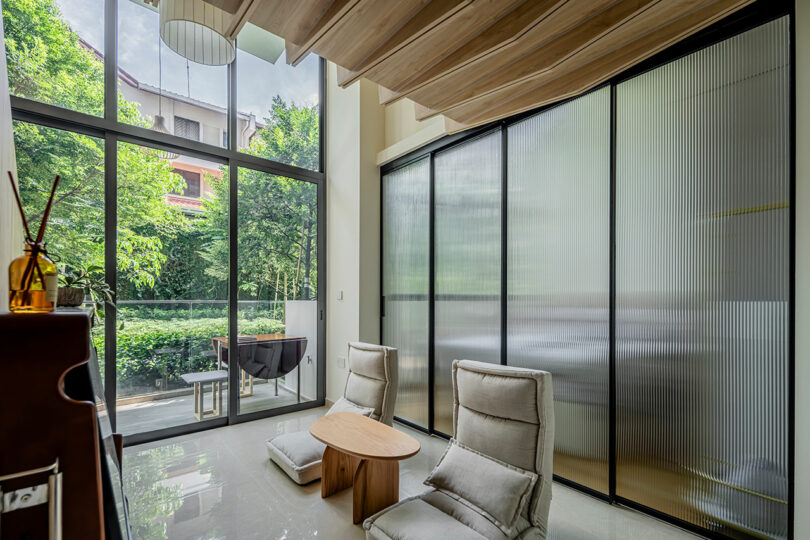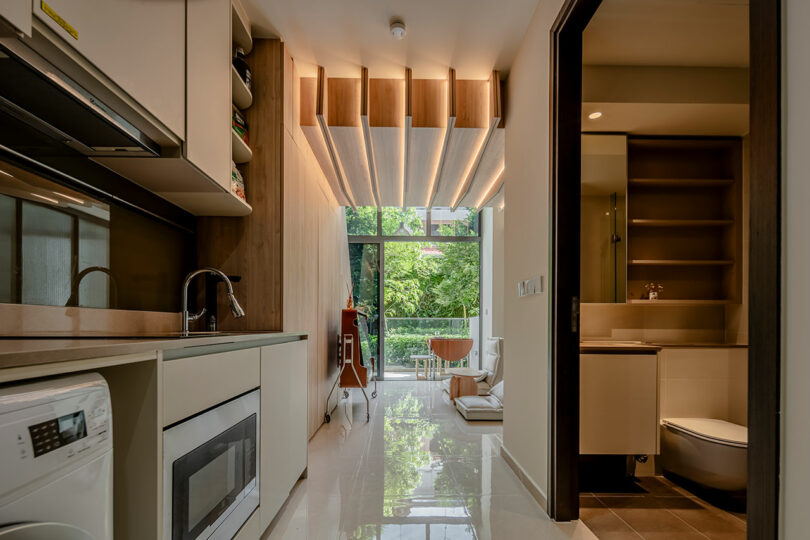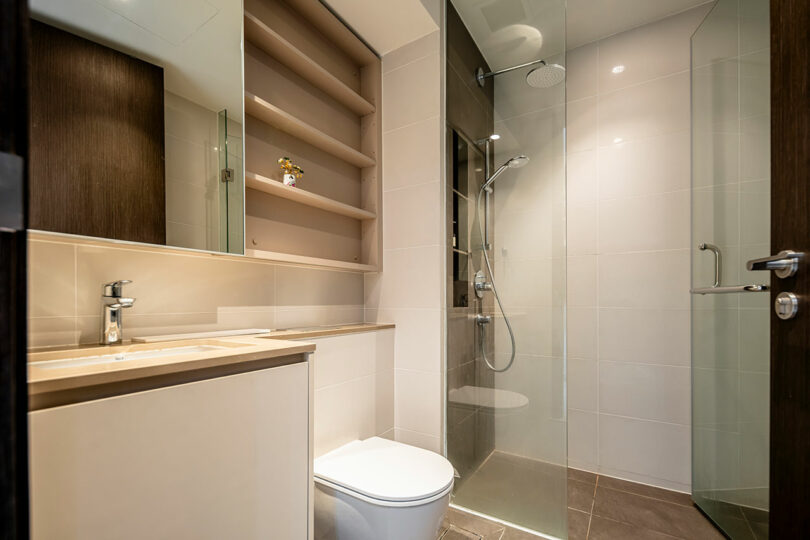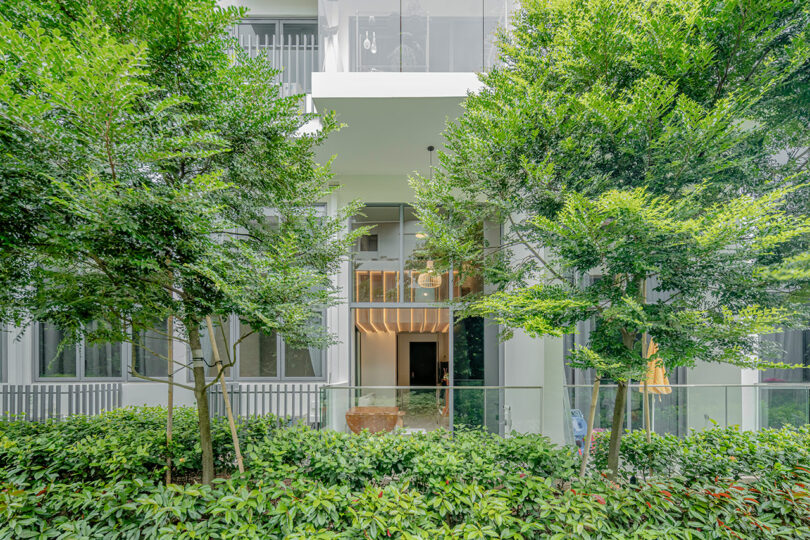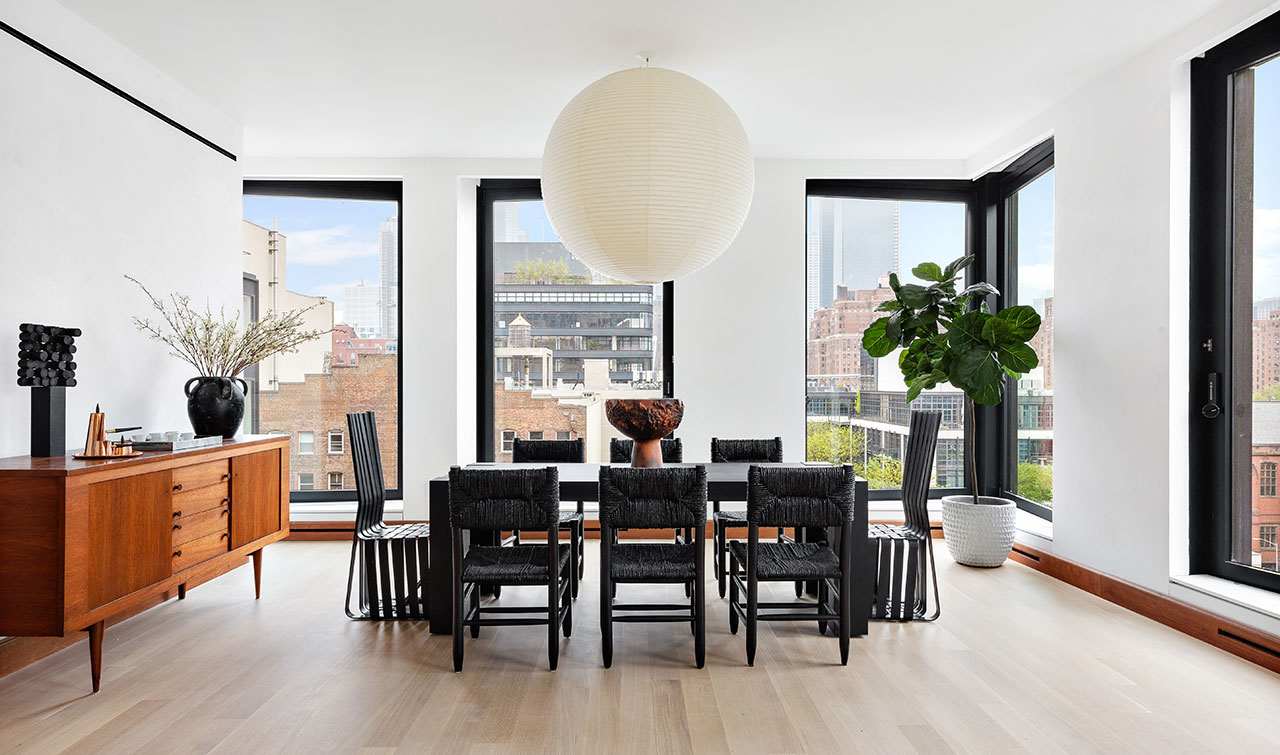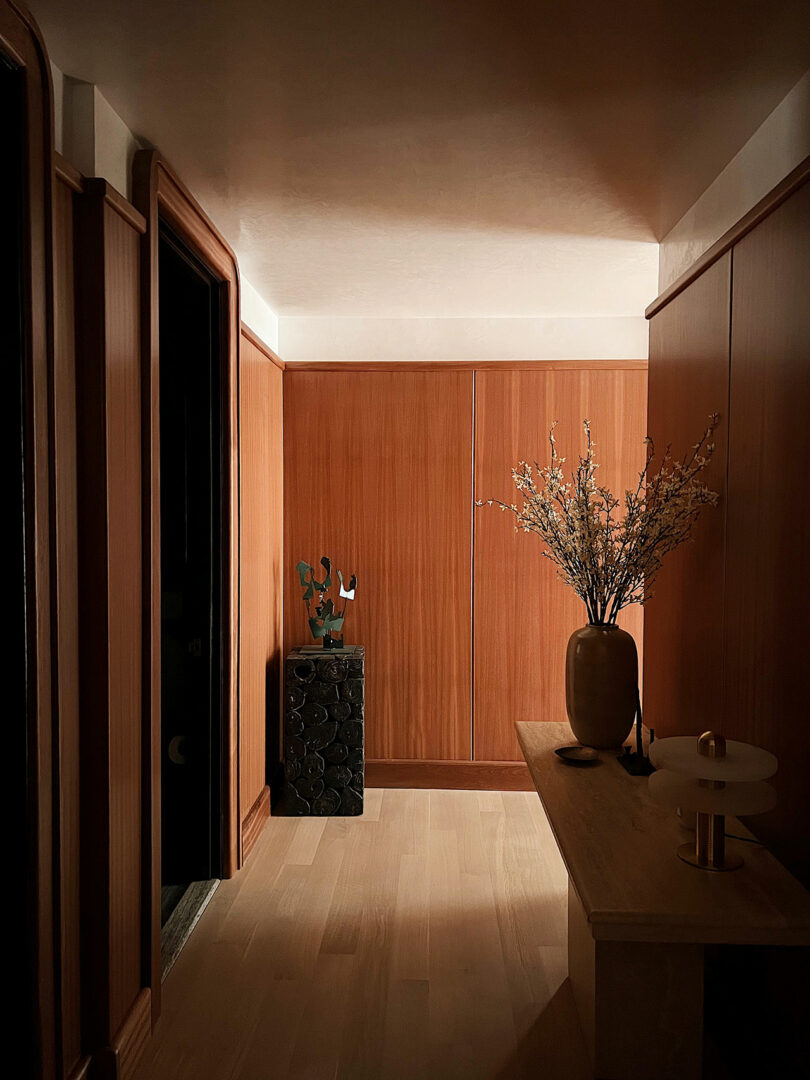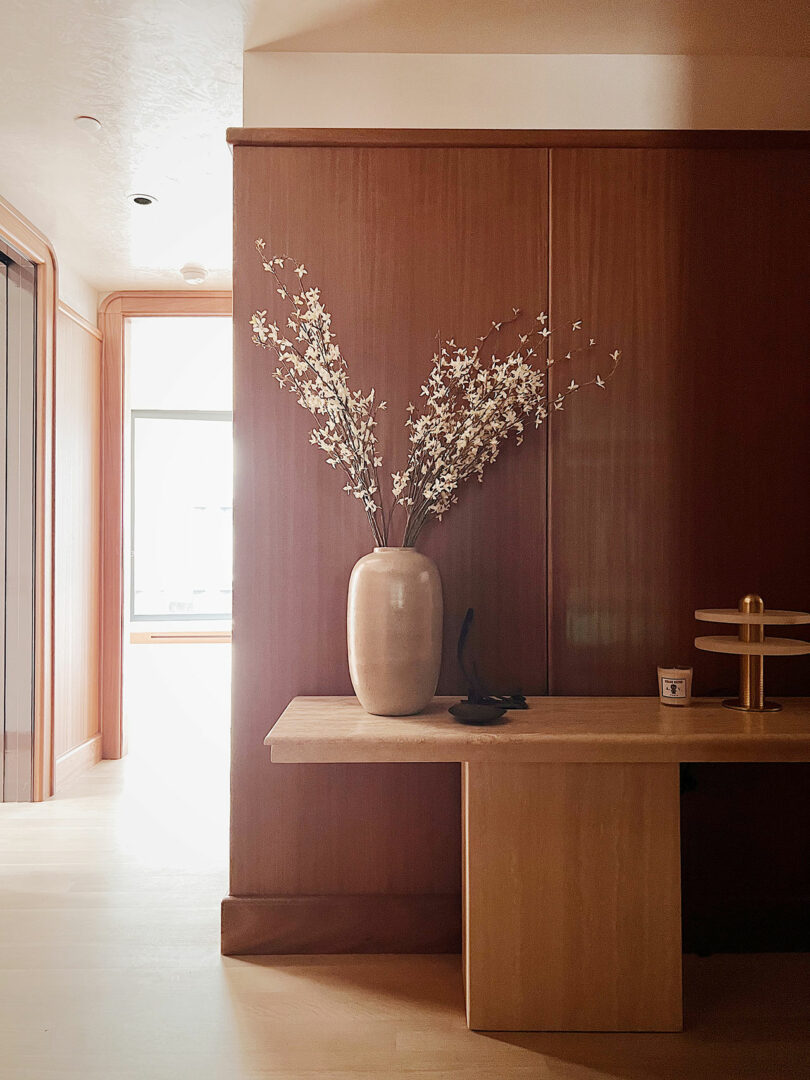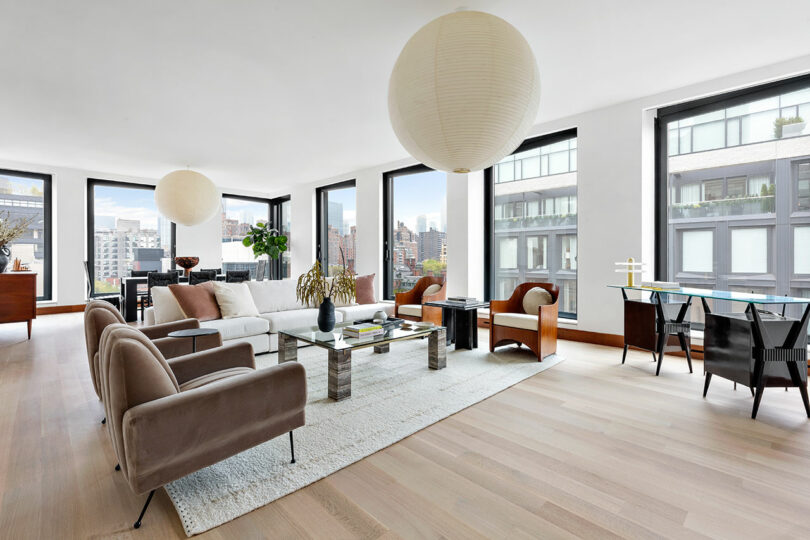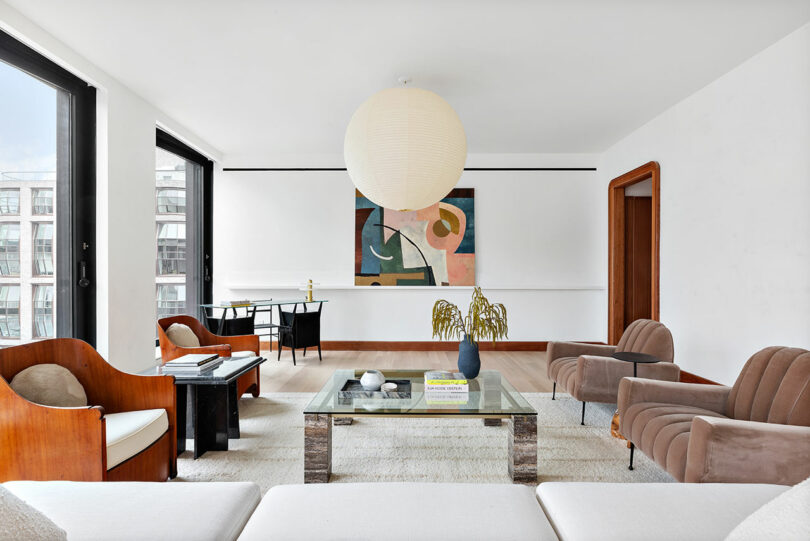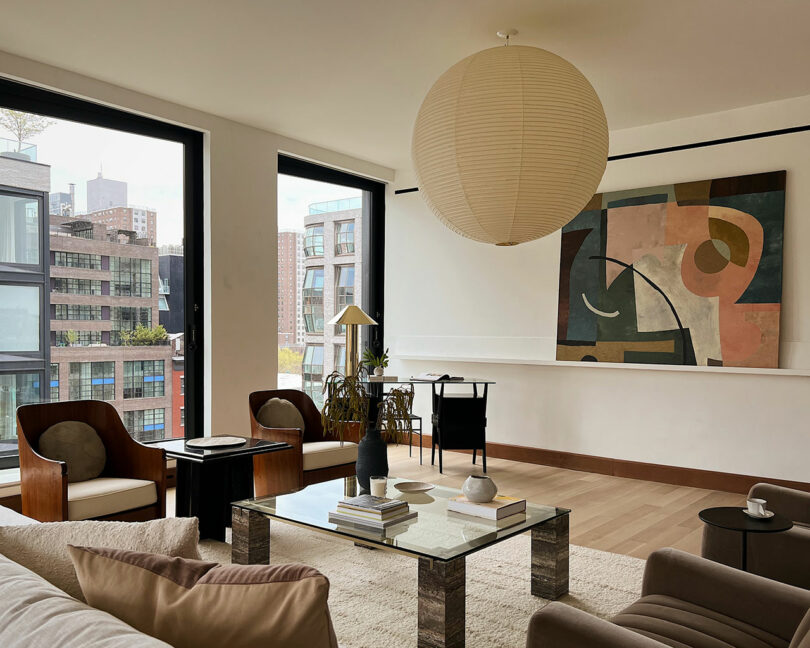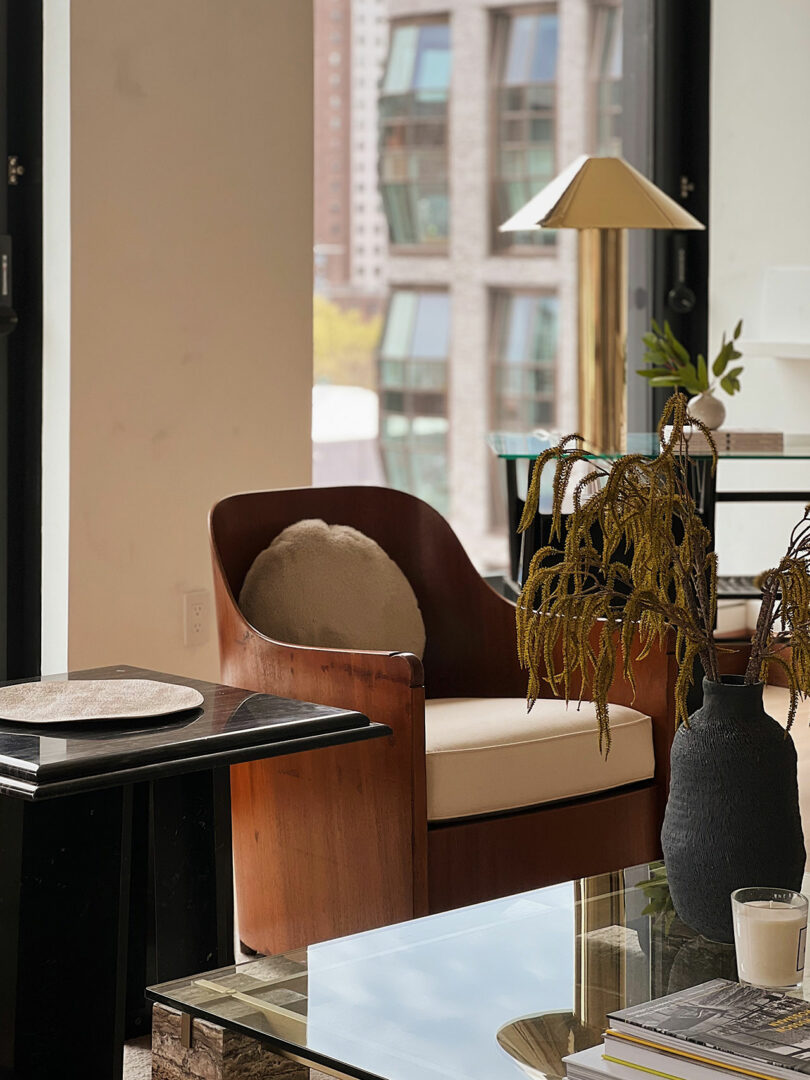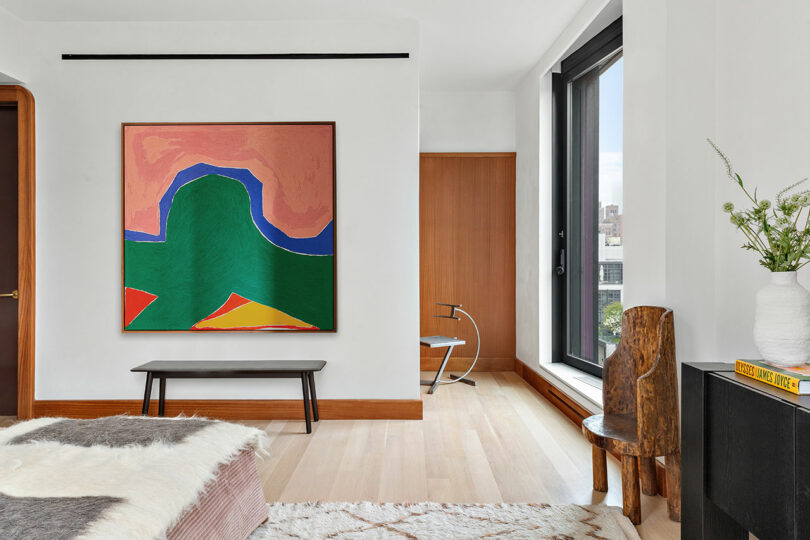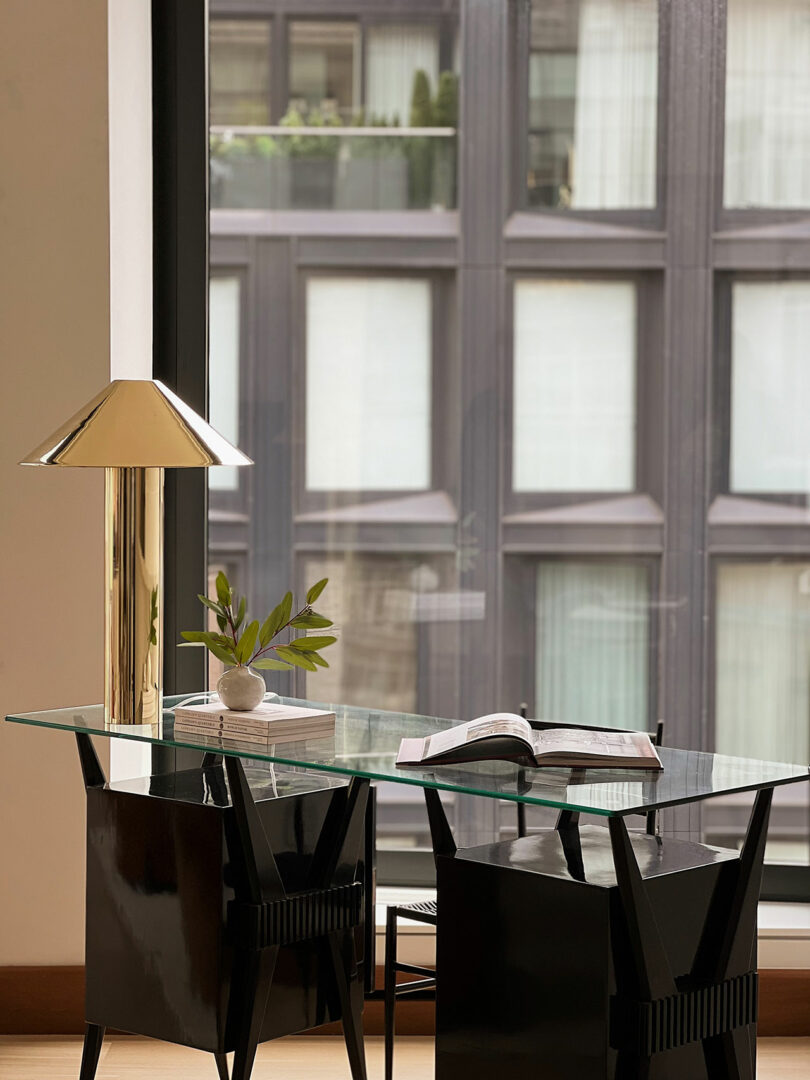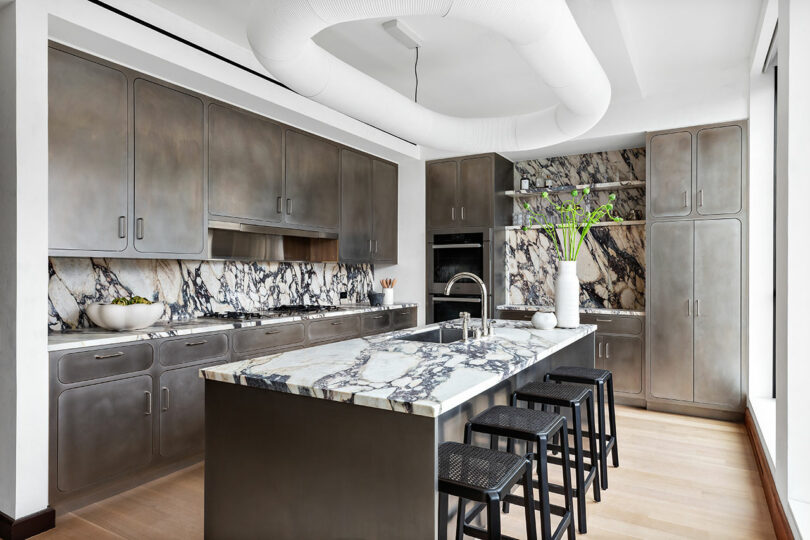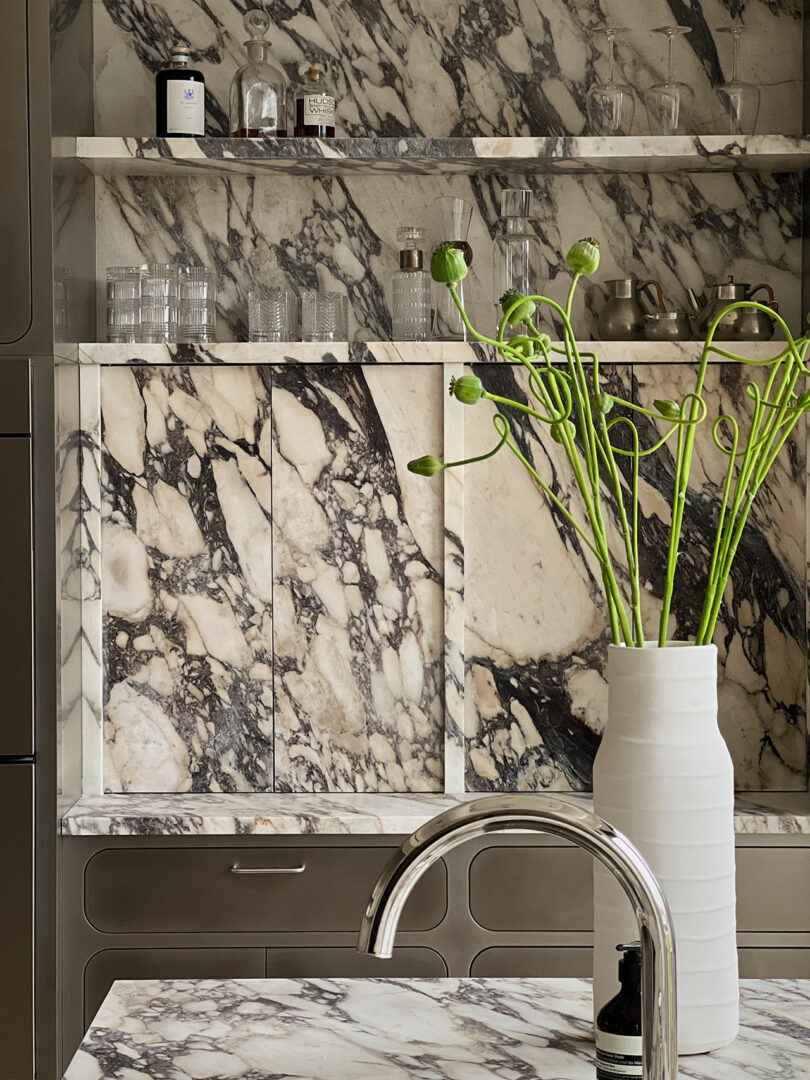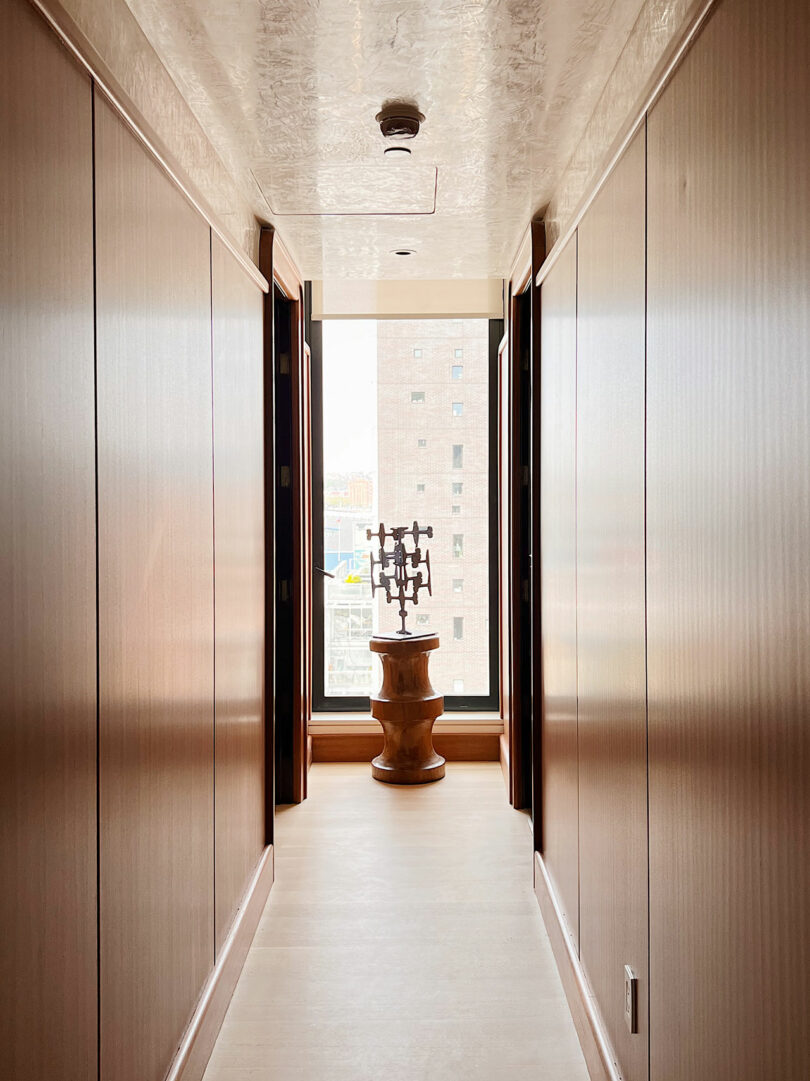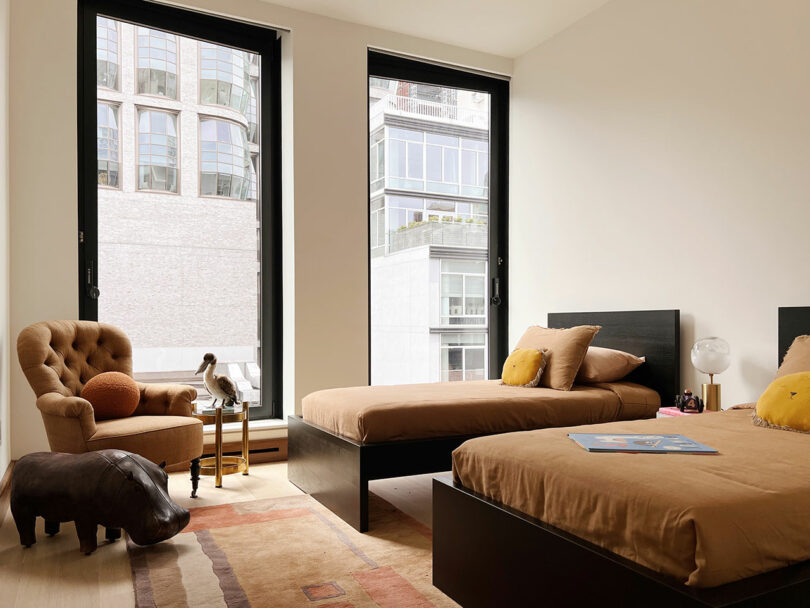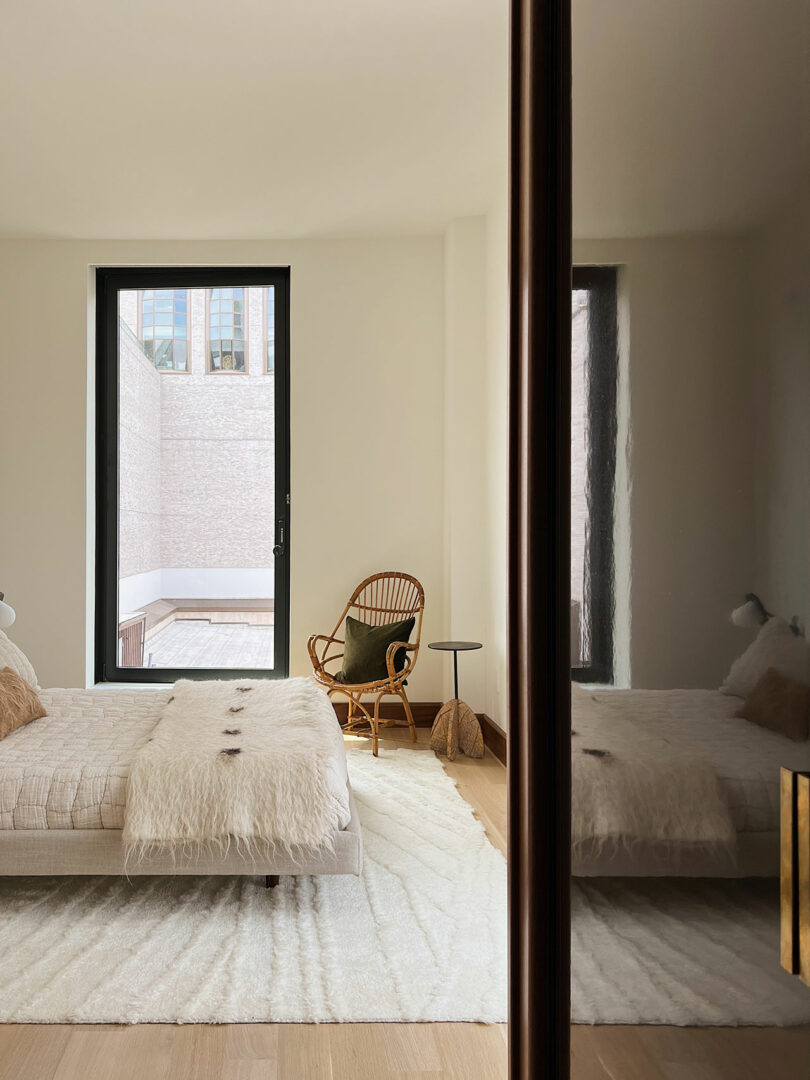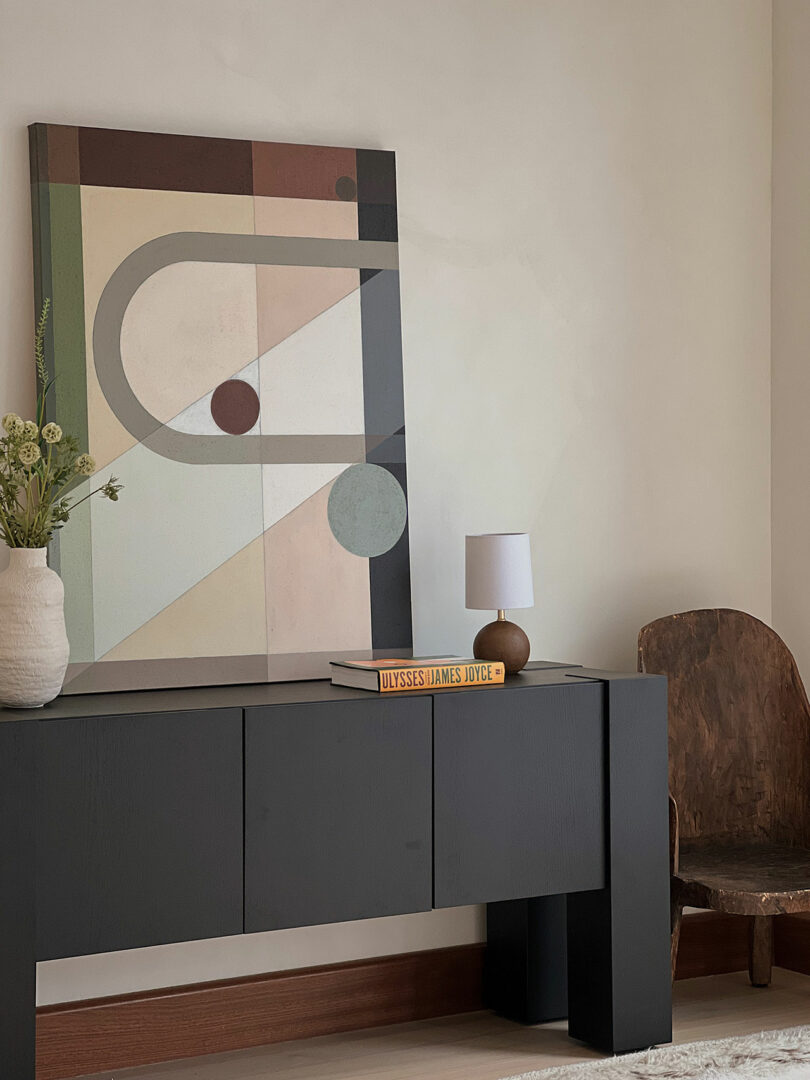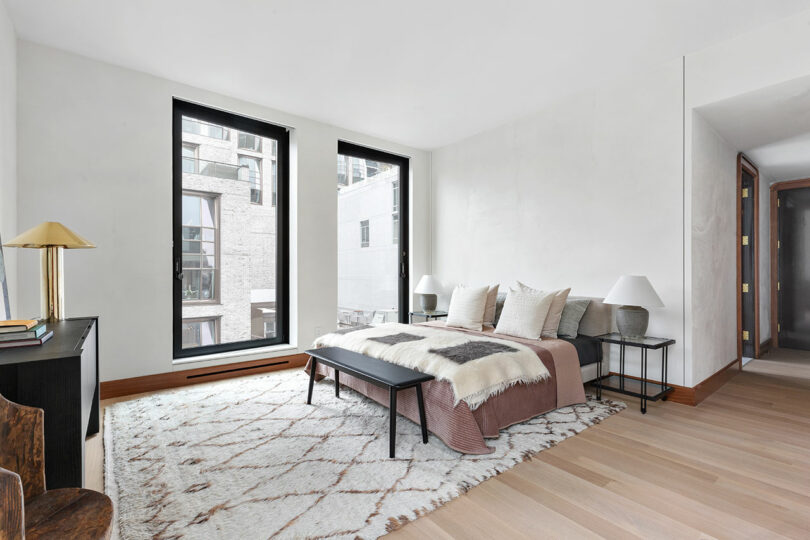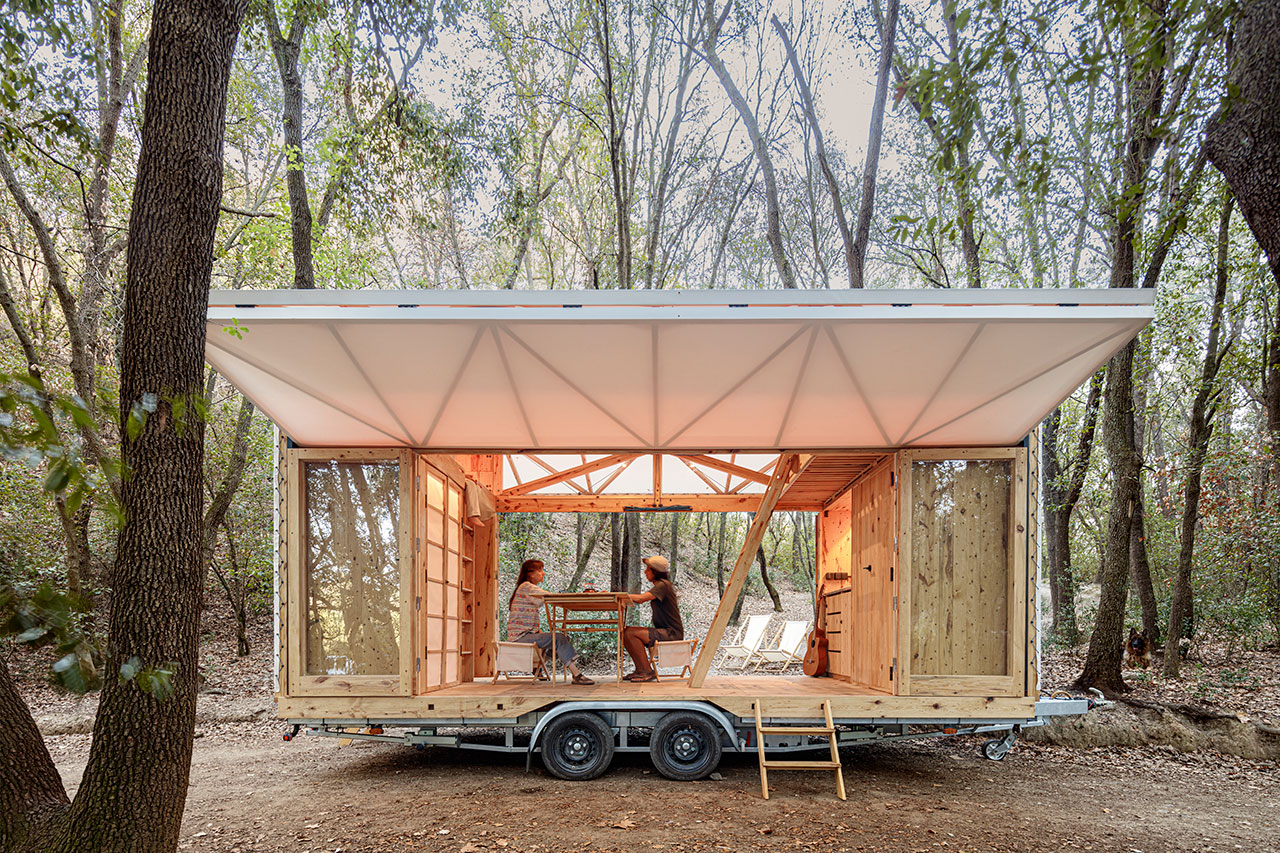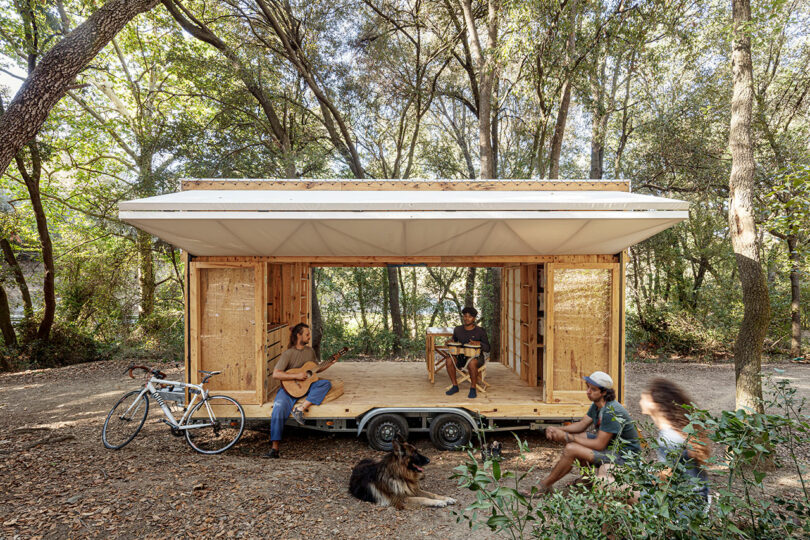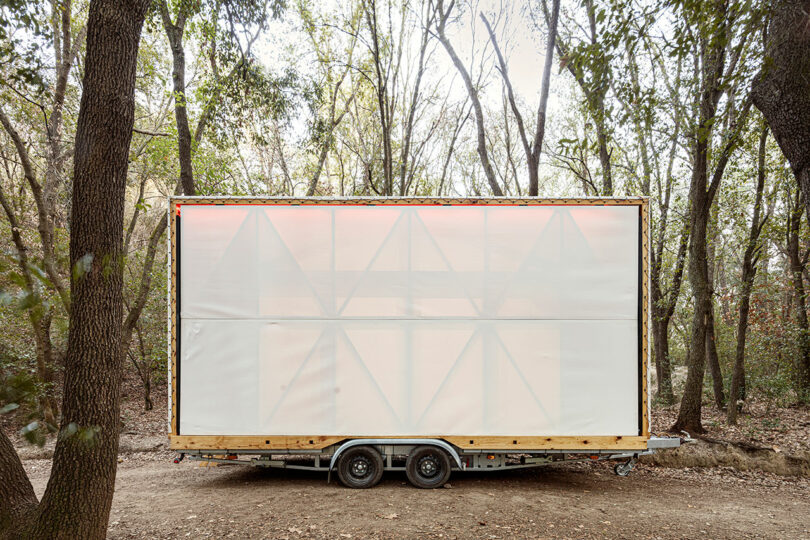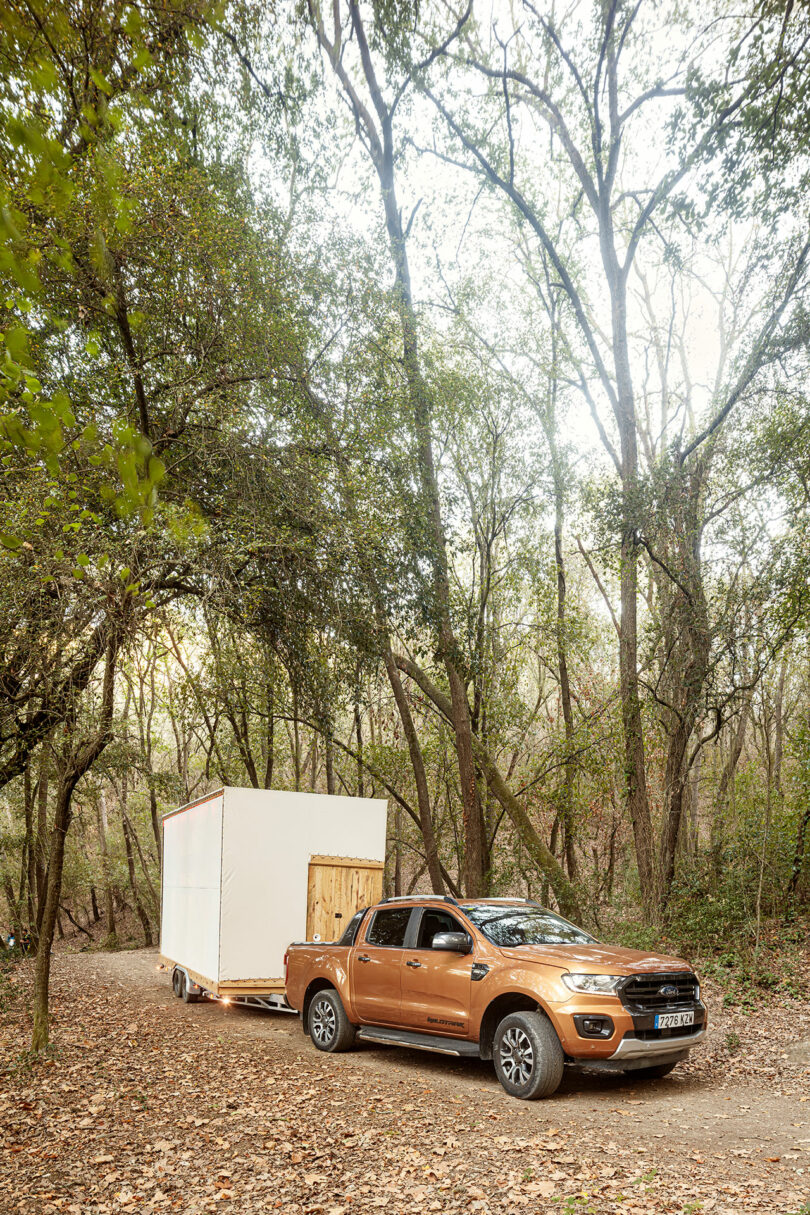Category: Architecture
Chelsea Residence Pays Homage to Manhattan’s Lost Artists’ Lofts
[ad_1]
As glass and steel continue to pierce the sky, a growing number of homeowners are trading tower residences for older buildings modest in story – homes akin to the artists’ lofts that made New York City a cultural epicenter during the second half of the 20th century. One such case study is this post-industrial-style apartment, situated in a 1920s prewar co-op building in the Chelsea neighborhood of Manhattan, by full-service interior design firm McGovern Project. Exposed timber columns with cast iron capitals, high ceilings, and generous lighting endear the memory of early industrial day-lit structures within this newly renovated space crafted for a couple deeply devoted to city living.
A key-locked elevator opens up to a gallery-like floor plan with 10-foot ceilings that flood the room with plenty of light from the north, south, and east exposures – a notable feature capitalized upon to showcase the homeowners’ art collection and pay homage to the artistic talent once prolific in the contiguous neighborhoods. “The allure of a loft’s blank canvas layout and expansive living area captivated Mateo and Francesca. Their vision was to preserve the space’s original architectural charm while integrating modern conveniences and eschewing outdated features,” says interior designer Chris McGovern, who oversaw all aspects of the interior architecture.
Working alongside architect Eugene Khananov, McGovern was able to maximize programming within the narrowing unit to yield a robust arrangement within the 2,400-square-foot residence. It now includes three bedrooms, two full bathrooms, office, a covetable suburban-sized laundry, courtyard, and a sizable common space, which comprises the entertainment, kitchen, and dining areas. The space plan also ensures that interior architectural details may be appreciated from any position within the great room. European white oak floors and complementary, crisp white trim in chantilly lace are beautifully contrasted by black interior doors. And many of the furnishings were upholstered in performance fabrics or rated for high traffic to accommodate regular play. Graphic wallpapers and ceiling prints also indulge in fun.
Interior decor, nay artistic staging, drew inspiration from Francesca’s Manhattan upbringing while also nodding to Mateo’s South American roots. Works from painting to sculpture were arranged such that each may have its moment to be appreciated in assurance that no singular piece pulls focus. All elements are in dialogue including light fixtures, statement furniture, and cherished personal objects. Additional accents include light touches of olive green that evoke lush Peruvian valleys alongside gold reminiscent of Andean treasures. “Our design journey commenced with a dedication to preserving the gallery-like allure of this former artist’s loft while infusing it with a contemporary twist that melded the diverse cultural heritage of its inhabitants,” says McGovern.
To see more of Chris McGovern’s work, visit mcgovernproject.com.
Photography by Trevor Parker.
Production by Karine Monie.
[ad_2]
Source link
A Contemporary A-Frame Addition in Toronto
[ad_1]
Nestled in the Leslieville neighborhood of Toronto, Canada, House Caroline (great name!) is a modern A-framed addition to a Victorian home from the 1850s. The project, designed by Reign Architects, marries historical charm with modern functionality. Once a partitioned and dimly lit residence, it now serves as an open, light-filled, and welcoming haven for a young family.
The design started with the client’s desire to transform their home into a space that reflects their daily needs. Central to this vision was the addition of a third-floor primary suite, inspired by the client’s love of a maple tree in the backyard. This natural element became a focal point in the design, influencing the architects to create a harmonious blend of indoor and outdoor spaces.
Faced with the challenge of preserving the home’s Victorian charm while overcoming spatial obstacles and limited natural light, Reign Architects employed a series of innovative solutions.
The heart of the home, where the kitchen meets the living room, showcases white oak cabinets that merge with the media unit. This integration provides ample storage and places to showcase beloved objects, turning the entertainment unit into a multifunctional piece that goes beyond storage, with additional seating and a cozy spot by the fireplace.
Custom millwork plays a crucial role on the ground floor, where the dining room features a curved banquette that fits into an existing bay window. This design not only maintains the historical integrity of the space but also ensures a smooth flow from the front entry through to the rest of the house, while comfortably seating eight people.
To address the home’s narrow width and shallow depth, the architects designed a double winder stair with stacked guard rails. This design efficiently utilizes space, making room for a much-needed marble kitchen island and functionality spread throughout all three levels of the residence. The stairwell, with its open design, channels natural light from a strategically placed skylight, creating a bright and airy atmosphere throughout the home.
With the residence’s north-facing orientation, the architects maximized natural light by leveraging southern exposure from above and western light from the rear facade. On the ground level, a floor-to-ceiling window creates a seamless connection between the indoors and the outdoors, offering uninterrupted views of the maple tree and enhancing the flow of light.
The A-framed timber roof and exposed Douglas Fir beams frame a skylight that captures optimal sunlight throughout the day, creating a serene environment. The top floor especially benefits from the skylight as the narrow width requires an extremely pitched roof requiring the only windows to be placed at the front and back of the space.
The primary closet doubles as the pathway between the bedroom and the bathroom on either end of the house.
Photography by Riley Snelling, courtesy of v2com.
[ad_2]
Source link
D-Day Museum / Projectiles – ArchDaily
[ad_1]
D-Day Museum / Projectiles ArchDaily
[ad_2]
Source link
Mindful Updates Retain Heritage in Vancouver Home Modernization
[ad_1]
Stitched into a 1910 Edwardian-era structure in the historic Shaughnessy neighborhood of Vancouver, British Columbia, Canada is a series of contemporary interventions by Measured Architecture working in tandem with landscape architecture by Paul Sangha Creative landscaping. The truly laudable solutions are thoughtfully composed to consider context while adding only meritorious elements to an architectural patchwork as its quilt continues to unfurl, reflecting this current contribution to a storied historical fabric. “Although my aesthetic is modern,” admits one of the homeowners, “I have a deep appreciation for history and loved knowing that the building, property, and neighborhood had lots to tell already.”
The Shaughnessy House reflects a curatorial, multi-phase approach to contemporizing the home, which creates a new architectural throughline tethering space and time. A series of forward-looking enhancements are fused with the 4,500-square-foot, traditional foursquare plan – one where rooms are parsed into quadrants, clearly delineated, moving from communal to private programming as the floors ascend – while rectifying updates from an 80s renovation attempt. The structure is now anchored by a grand, four-story blackened-metal central stair showcasing warm wood paneling, an adjacent glass atrium that acts like a light well, and multi-level privacy curtain system designed in collaboration with local artisan Cloth Studio. Guests are granted access to a nearly uninterrupted view through the main volume as its design trades an unmitigated open plan for intentional site lines.
The exterior is also indicative of great discretion having been practiced with structural intervention. While the front facade maintains the integrity of its historical milieu, the rear delights in reinterpreting it. The central volume is expressed by uninterrupted floor-to-ceiling windows that crown with an enclosed glass cupola on the top floor reminiscent of the widow’s walks popular in the home’s aesthetic heyday. This vertical stacking also creates lines of continuation that meet those generated by the infinity pool as the yard reaches the domicile. In playful contrast to the residence – rather than a bastardization of historical elements – is a modern, steel-clad cubic structure situated a short distance from the main dwelling and perpendicular to the infinity pool. The upper portion is clad in mirrored surfaces, which help camouflage the unit while visually enhancing the yard’s depth. Below is a pool house in the style of a walk-out basement.
The Shaughnessy House landscape utilizes indigenous plants in a composition distilled through picturesque visions of lakes and oceans of the Pacific Northwest. “We aimed to create a series of diverse zones that harmoniously coexist under a unified design concept,” says Paul Sangha, principal landscape architect and founder of Paul Sangha Creative. Integrating all levels of the property, these zones include formal plantings informed by the neighborhood’s heritage design guidelines, a designated active leisure with pavilion and sports court, a dining terrace, the trellised walkway connecting the veranda to the new garage, a poolside lounge space, and a walkway between a play structure and the pool house. Natural boulders were worked into boundaries of elements like the infinity-edge pool to soften harsh lines and lean into natural, meandering paths.
Noteworthy still are the myriad green initiatives the Shaughnessy House boasts. The central textile curtain not only provides privacy, but also acoustic dampening and heat abatement. Black solar panels integrated into the top of the poolhouse structure heat the water feature year round. Indigenous plantings embrace rewilding and a stormwater tank system works with the environment to manage runoff. The interior refurbishments include a reinsulated envelope and walls, high-efficiency windows, and the recoating of radiators before reinstalling them in efficient locations connected to a new, state-of-the-art boiler. Among other accolades, this house holds the Architectural Institute of British Columbia (AIBC) Special Jury Award for Heritage Retention and Modernization. “The project started with a 1910 grand house originally built for an English family,” say Clinton Cuddington and Piers Cunnington, principals at Measured Architecture. “And now, introduces contemporary interventions to draw the building into the present.”
To view the designers’ respective portfolios visit measured.ca and paulsangha.com.
Photography by Ema Peter Photography; Production by Karine Monie.
[ad_2]
Source link
A Tiny Apartment in Singapore Maximizes Space With a New Loft
[ad_1]
Metre Architects, a design firm known for its innovative spatial solutions, has pushed the boundaries of conventional design again with their latest project entitled Vessel. Located in Singapore, this new condo apartment underwent renovations to add a loft structure and to tailor the design to the lifestyle needs of the young professional couple who owns it. The pair requested a loft to be added to the compact 41-square-meter space (approx. 441 square feet) with a 4.7-meter-high ceiling (approx. 15-1/2 feet tall) while retaining the existing floor finishes, kitchen, and bathroom for both financial and sustainability reasons.
Upon entering the condo, visitors are greeted by a linear kitchen running along the left side of the hallway. The loft, which has a lower soffit height than the corridor, is visible from the entryway creating a sense of anticipation and spatial depth from the start. The integration of LED strip lights, along the ribbed joinery on the bottom of the loft, enhances the overall ambience of the small living room underneath it and beyond.
The loft resides above the living room, which is reached by a clever wood box staircase comprising alternating half steps. The steep angle of the design requires a much smaller footprint than a typical staircase. Space under the stairs was not wasted; Metre Architects added a wall of storage accessed with push-to-open mechanisms that allow the panels to rest flush against the wall without the need for pulls or knobs.
The loft houses the couple’s home office along one wall with views of the backyard out of their double-height wall of windows on the other side. Amongst the lush greenery in the back, the apartment has a garden patio to enjoy time outdoors.
A pair of floor recliners in the living room are used in lieu of a larger, traditional sofa to save on space. The original wall that divided the living room from the bedroom has been replaced with sliding fluted-glass doors, allowing for a seamless integration (or separation) of the two spaces as needed. The textured glass allows natural light to pass through while offering the couple privacy when they desire it.
The Vessel loft, reminiscent of the construction of a boat, serves as the metaphorical ship that supports the owners through their current phase of life while offering the potential for future occupants to embark on their own journeys within its walls.
Photography by Shiya Creative Studio.
[ad_2]
Source link
Rockhill Construction Is a Steward for Craft in Chelsea Condo
[ad_1]
While star-chitects bask in the glory of their completed projects, contractors and construction companies responsible for realizing those designs are often overlooked. And at no fault of their own, so too is the general public unaware of the difference between things like interior architecture and interior design – the articulation of functional space through building and the making of interior atmospheres through aesthetics, respectively. Manhattan-based Rockhill Construction, and their network of adept craftsmen, offer a masterclass in collaborative making with their Chelsea Condo project.
The roughly 3,000-square-foot, full-floor flat comprises three bedrooms, three full bathrooms, one half bath, laundry, a generous kitchen, and airy catch-all living spaces that can accommodate entertaining, offer respite from the din of city living, or host a late night charrette for the creatives who live there – all of this overlooking the High Line. Central to the concept, and subsequently material narrative, are the residents’ personalities. Studio LOVEISENOUGH – who translated those intangibles into an experiential interior architecture – entrusted that Rockhill Construction would imbue their handiwork with the same spirit.
Tasked with unique requests, the builder assembled this architectural machine whose mission is in service of humanity, where guests are immediately greeted upon entry to the elevator foyer by the first of several interventions, which begins with a built-in bench for daily rituals as homeowners come and go. The curvaceous form complements the body’s shape and borrows warmth from the refurbished oakwood floors as if it has cataloged a lifetime of homeowners. Circulation through the residence is constantly cushioned by millwork, thresholds, and plaster wall finishes that beg one’s touch to linger. Leaning into the intimacy of space, a more private circulation corridor was created for concealed flow. In addition to Rockhill’s know-how, the ability to create custom millwork in-house made rerouting foot traffic and concealing building systems seamless with the design.
The kitchen elaborates on the warmth generated by the wood found at the entry and in the primary living spaces – and is exemplary of the construction company’s technical prowess. Vast swaths of muddied marble are contrasted with stainless steel custom cabinetry in a seemingly weathered finish that only adds to the home’s persona. The rounded corners of cabinet doors take their cues from the pattern established in the backsplash. The softened corners are created by cutting 404 stainless steel with a water jet, given a brush finish, and laminated to walnut substrates. Marble was also made kinetic with pivot hinges on stone doors to create an appliance garage. “Our technical team, capable of realizing the most remarkable solutions to design directives, proposed the assembly as a means to realize the soft close and touch latch design,” says Rockhill. “For me, personally, it was proof of concept that a shared vision can be realized.”
Though the project passed through a variety of hands to arrive at this place – from conceptualization of interior architecture, through construction, and onto interior design and staging – Rockhill has been a steward for the space. “Somehow that apartment, which is so generous in its proportions, sitting up high over the Hudson, with subtle references to the Space Age and travel, comes alive while vacant, which makes it all the more poetic. It becomes its own satellite for a moment.”
To learn more about the creatives at play visit rockhill.nyc and studioloveisenough.com.
Home staging by Hovey Design. Photography by Shannon Dupre.
[ad_2]
Source link
Wendell Mueller | Mackenzie | Daily Journal of Commerce – Daily Journal of Commerce
[ad_1]
Wendell Mueller | Mackenzie | Daily Journal of Commerce Daily Journal of Commerce
[ad_2]
Source link
The Future of Sustainable Living in a Mobile Home
[ad_1]
In a world where sustainability and mobility are becoming increasingly important, the Institute for Advanced Architecture of Catalonia (IAAC) has unveiled a groundbreaking project – MO.CA (MOBILE CATALYST). This modern mobile home, crafted from zero-kilometer natural materials and employing cutting-edge digital construction techniques, marks a new option for eco-friendly living. Developed by a team of students and researchers from IAAC’s Masters program in Advanced Ecological Buildings & Biocities (MAEBB), MO.CA promises to redefine the way we think about mobile living spaces.
MO.CA isn’t just another mobile home – it’s a vision of the future. Built entirely from sustainably harvested dowel-laminated wood sourced from IAAC’s Valldaura Labs in the Collserola Natural Park of Barcelona, MO.CA represents a fusion of traditional craftsmanship and modern innovation. This self-sufficient dwelling is designed to accommodate two individuals comfortably while boasting essential domestic amenities, all while minimizing its environmental footprint.
At the heart of MO.CA lies a commitment to self-sufficiency and mobility. Inspired by the human desire for freedom and exploration, the team behind MO.CA sought to create a home that not only meets contemporary needs but also contributes to its surroundings. Thus, MO.CA is more than just a mobile home – it’s a catalyst for change, fostering collaboration, and knowledge sharing wherever it goes.
The mobile home is flanked by two solid toolboxes, each equipped with essential utilities and surfaces for various activities in the central part of the unit. The heavier Toolbox A (Utility Toolbox) lands in the front of the trailer houses the kitchen, shower, toilet, and utility cabinet for the electric and water metabolic systems. Toolbox B (Activity Toolbox) is outfitted with surfaces and tools that help activate the open space, including a entry door for when the sides are closed.
There are two sleeping shelves located on the mezzanine level taking advantage of the vertical space in the structure. A movable ladder attached to the side gives users easy access at bedtime. The compact kitchenette includes a sink, one burner stove, fridge, and storage drawers, along with battery and tank water level indicators always in view. The bathroom is outfitted with a shower and waterless humus toilet, which eliminates blackwater normally produced, except the small amount from cooking and cleaning. Shower water collects in a basin and is stored in the grey water tank before being filtered and pumped to the recycled water tank for reuse. The collected water goes through a three-stage filter system and a UV filter for treatment.
The furniture, which is specifically designed to fold up and be stored out of the way, includes a table, six stools, two lounge chairs, and six Fab-kits. The Fab-kits, located behind the mezzanine ladder and by the entrance door, contain a first-aid kit, fire extinguisher, and storage space. There’s also space underneath to store three entrance ladders when not in use.
The exterior facade, composed of glass doors and a fabric covering, allows for an adaptable enclosure of the central space, ensuring comfort in any weather condition. There are four glass doors on each side that can be left open, partially open, or closed. When closed, the interior is protected from the elements. When open, the separation between the inside and the outside world disappears creating a cozy home. The outer fabric layer, which is made of a water-resistant cotton fabric stretched over a lightweight wood frame, slides and folds up with the aid of pulleys.
Powered entirely by solar energy, MO.CA can sustain 24 hours of continuous use without the need for recharging, making it truly self-sufficient. A set of three light-flexible monocrystalline solar panels connected to a MultiPlus inverter live on the roof, along with a backup battery, to keep unit up and running with power.
Project Credits:
Direction:
Vicente Guallart, Daniel Ibañez, and Michael Salka
Academic coordination:
Esin Zeynep Aydemir
Lab managers:
Bruno Ganem Coutinho, Lorenzo Salinas
Staff:
Laia Pifarré, Pilar Fontanals, Laura Sanchez
Designed and Developed by:
The students of the Masters programme in Advanced Ecological Buildings & Biocities (MAEBB), 2022/23 class:
Austin Brown, Basant Abdelrahman, Carla Alvear Arizaga, Jacek Antoni Kostrzewa, Jackie Williams, Julia Aurora Guzmán, Larsen Bidstrup, Raffaele Schiavello, Ruhani Adlakha, Sneham Pandey, Mariano Rodriguez Alonso, Sadegh Raoufi Fard, Charles Casbolt, Aishwarya Balsekar, Disha Arora, Indraneel Joshi, Laila Nabulsi, Nicolas Rotta, Nishanth Maheshwaran, Pradyumna Vikharankar, Prati Jain, Rujuta Chauhan, Shruti Sahasrabudhe, and Santwana MalakarProject
Host:
Valldaura Labs of the Institute for Advanced Architecture of Catalonia
Sponsors:
Luz Negra, Tallfusta
With the support of:
Parc de Collserola
Advised by:
Jesus Bueno, Jochen Scheerer, Miquel Rodriguez, Thatcher Bean
Photography by Adrià Goula.
[ad_2]
Source link

